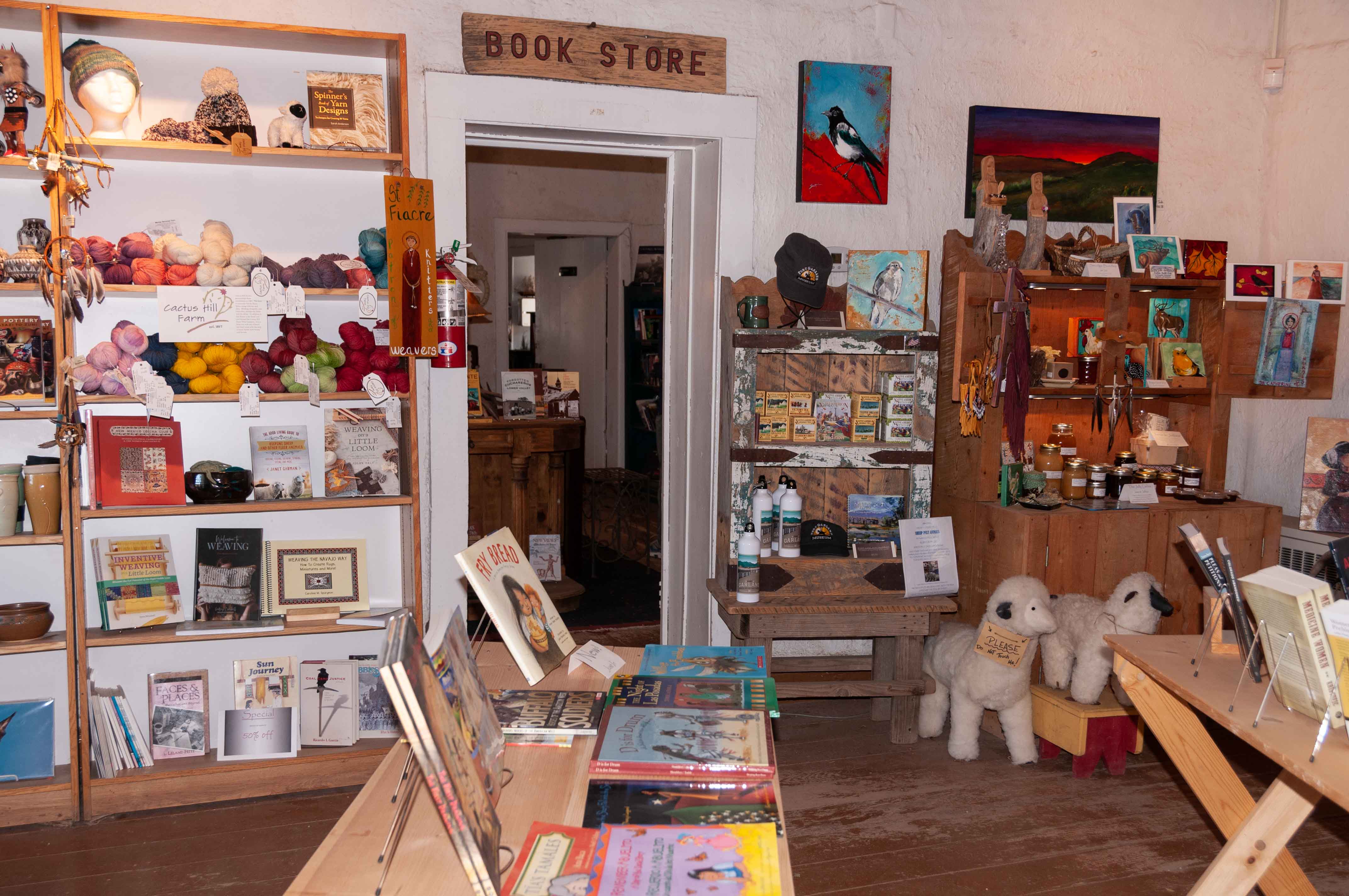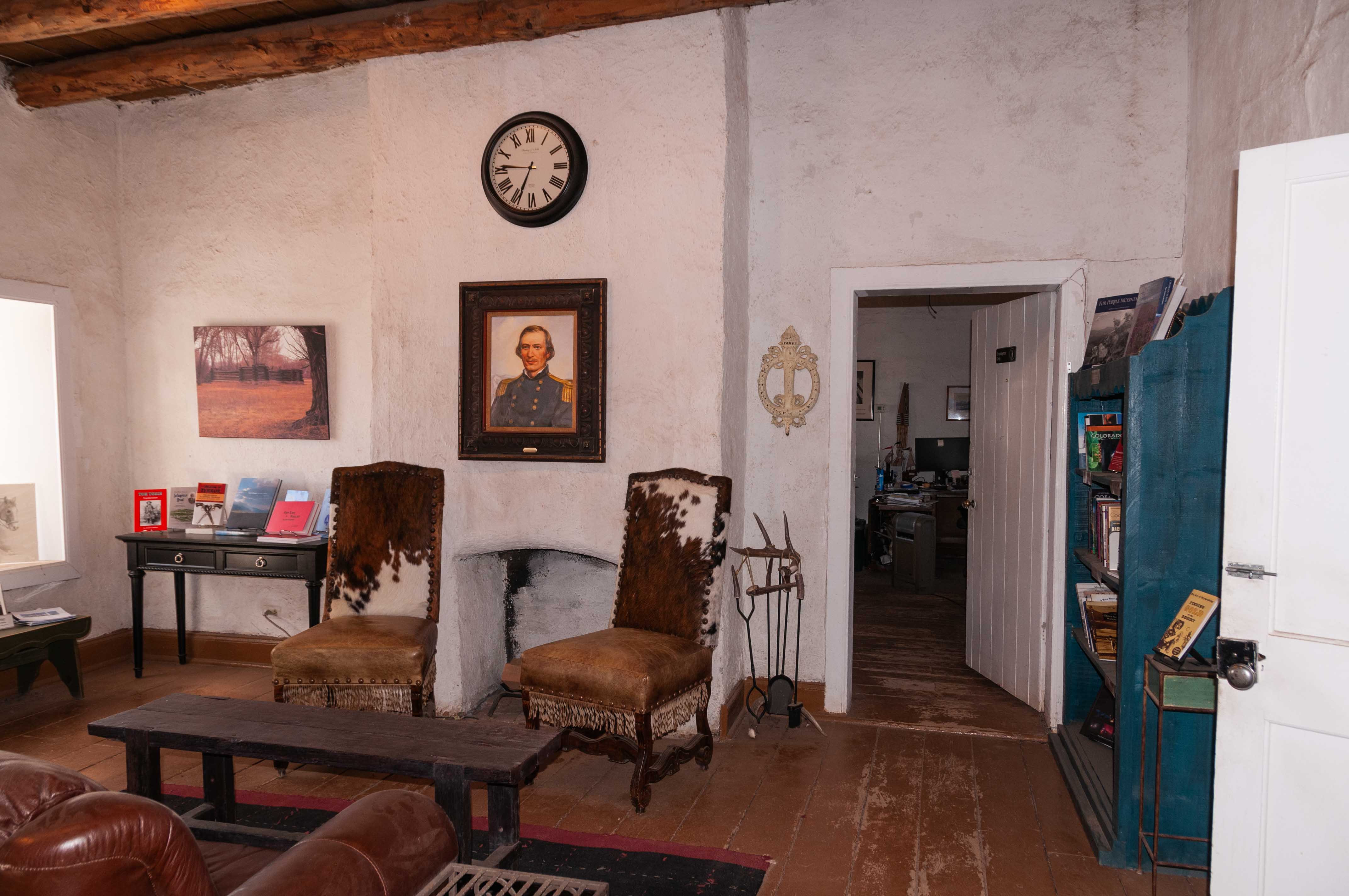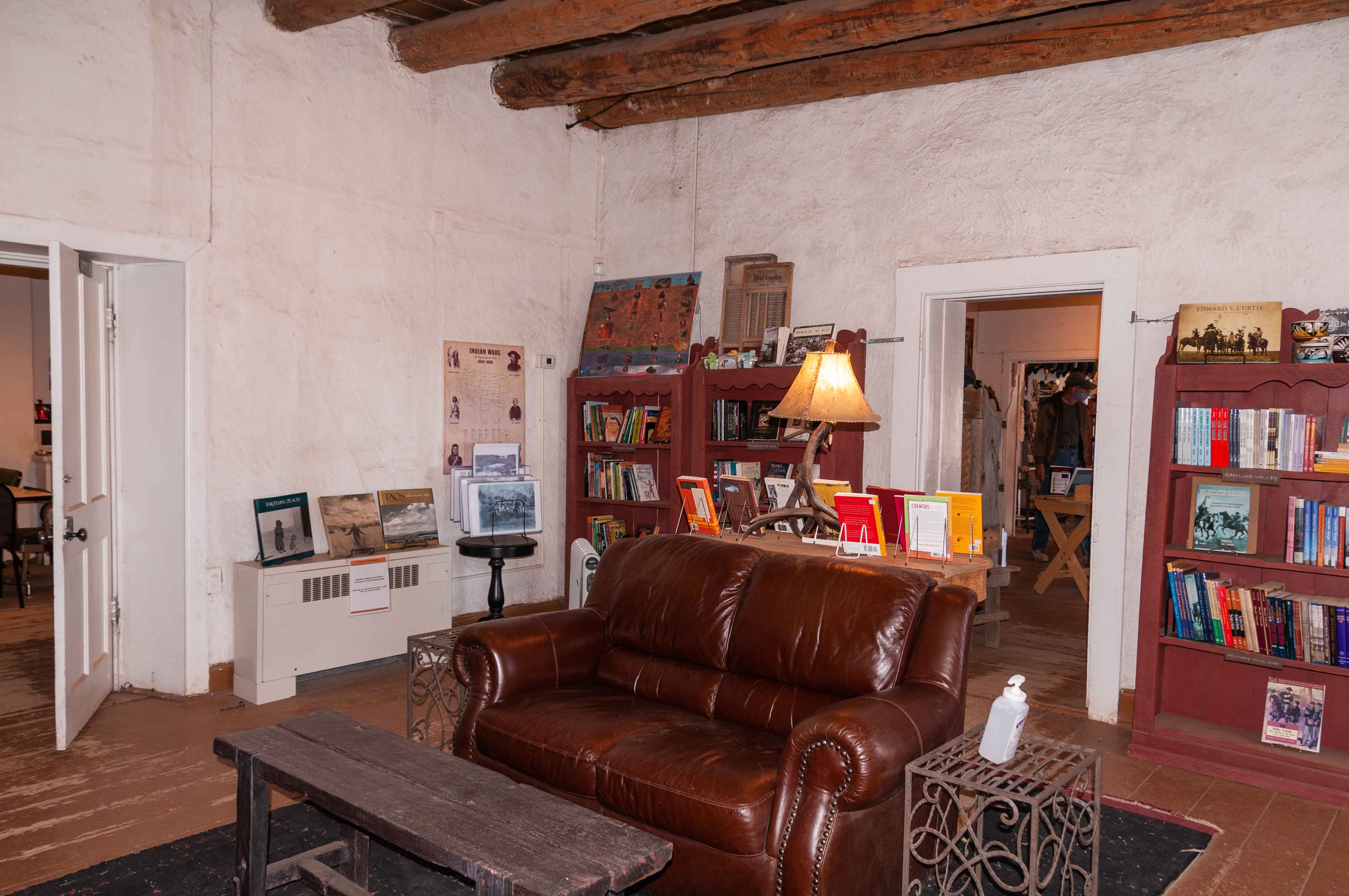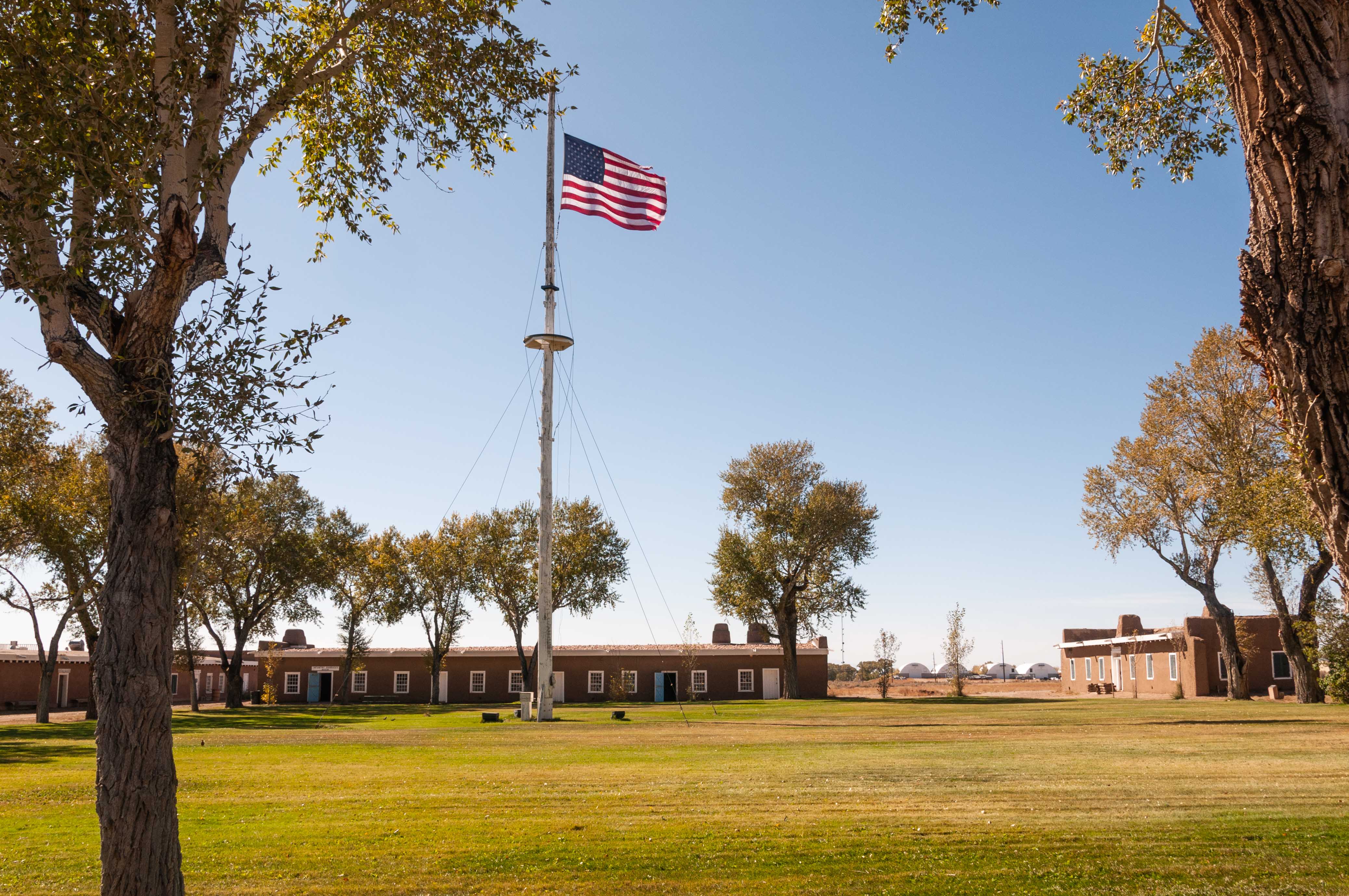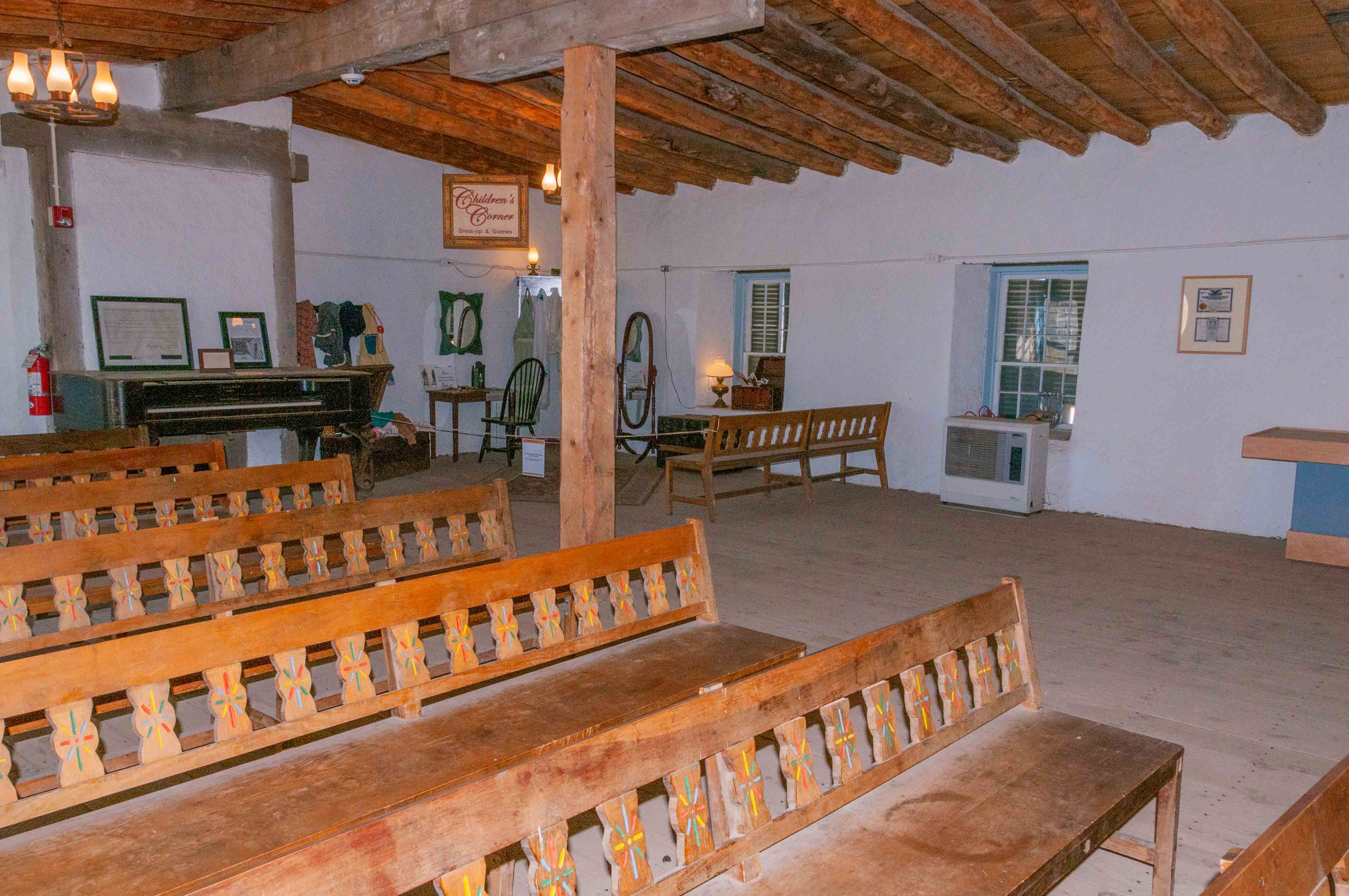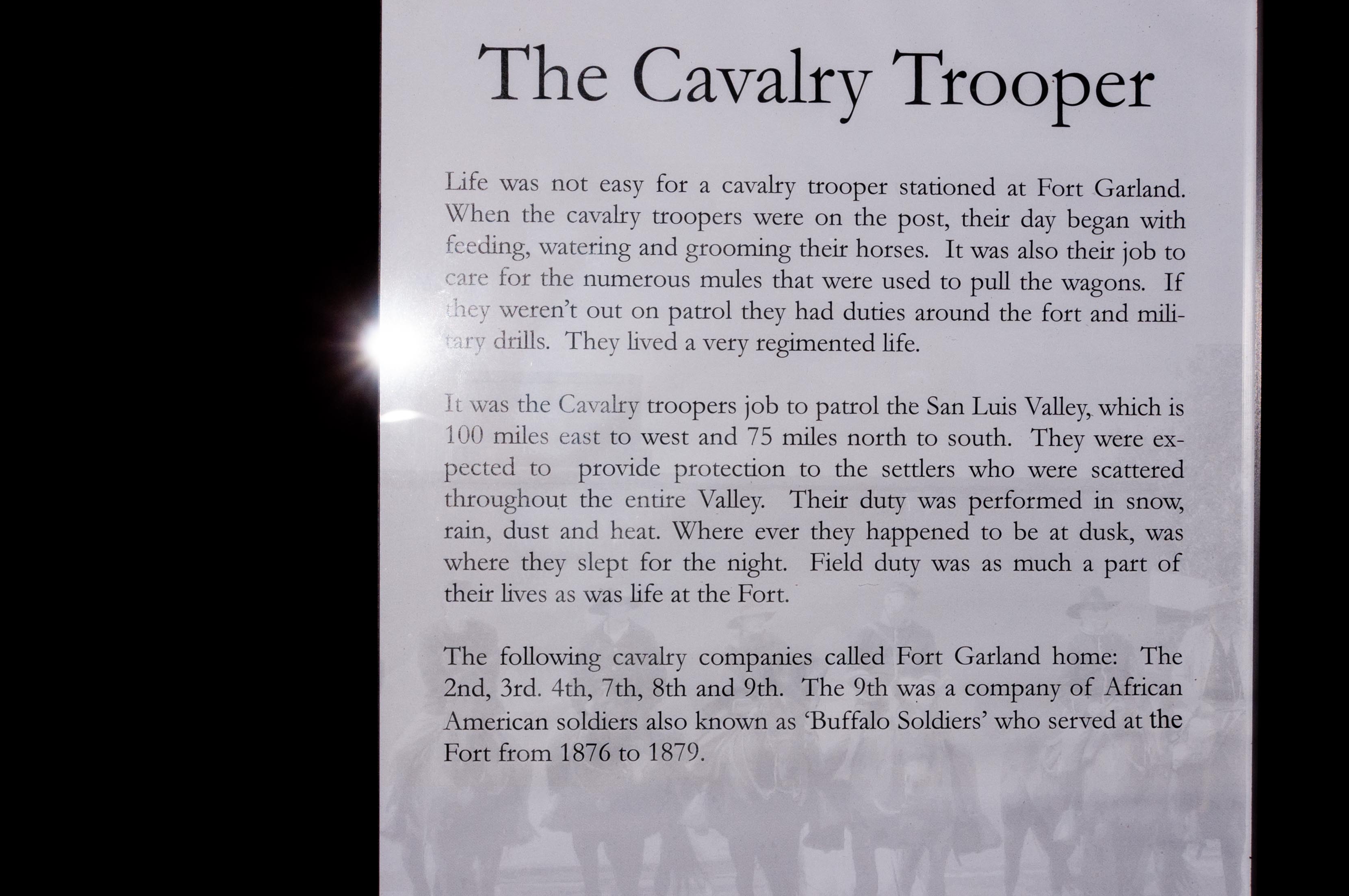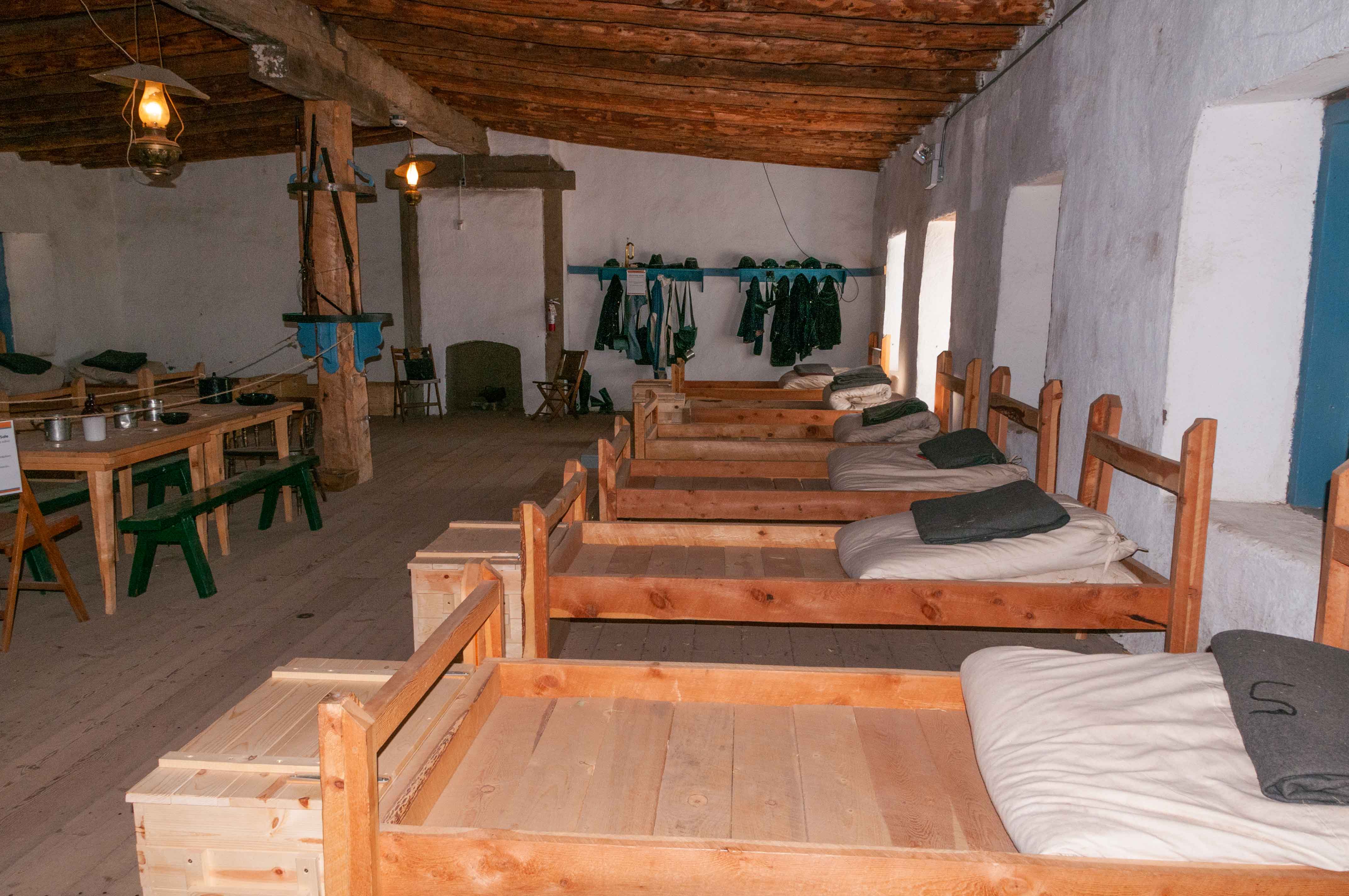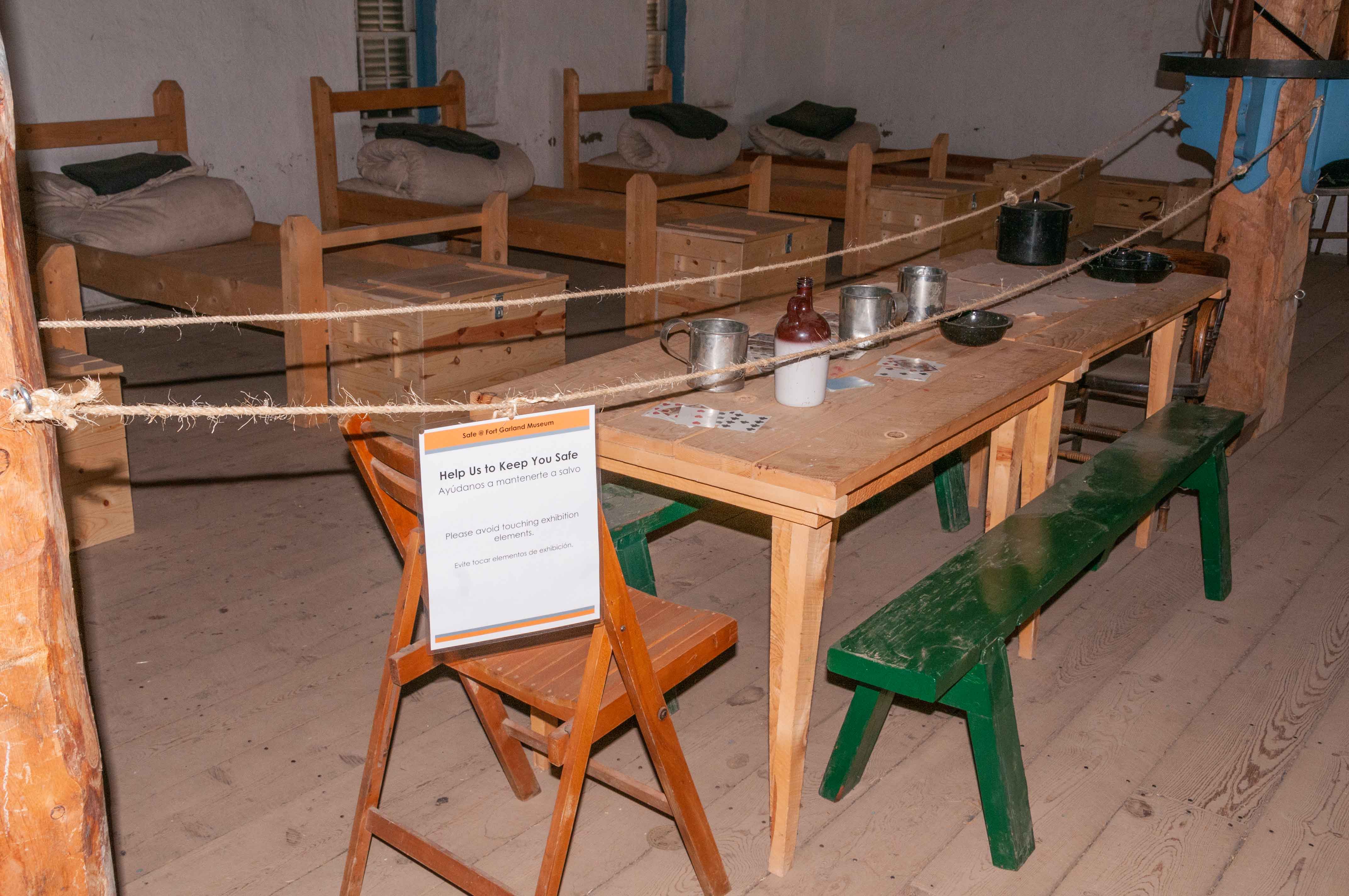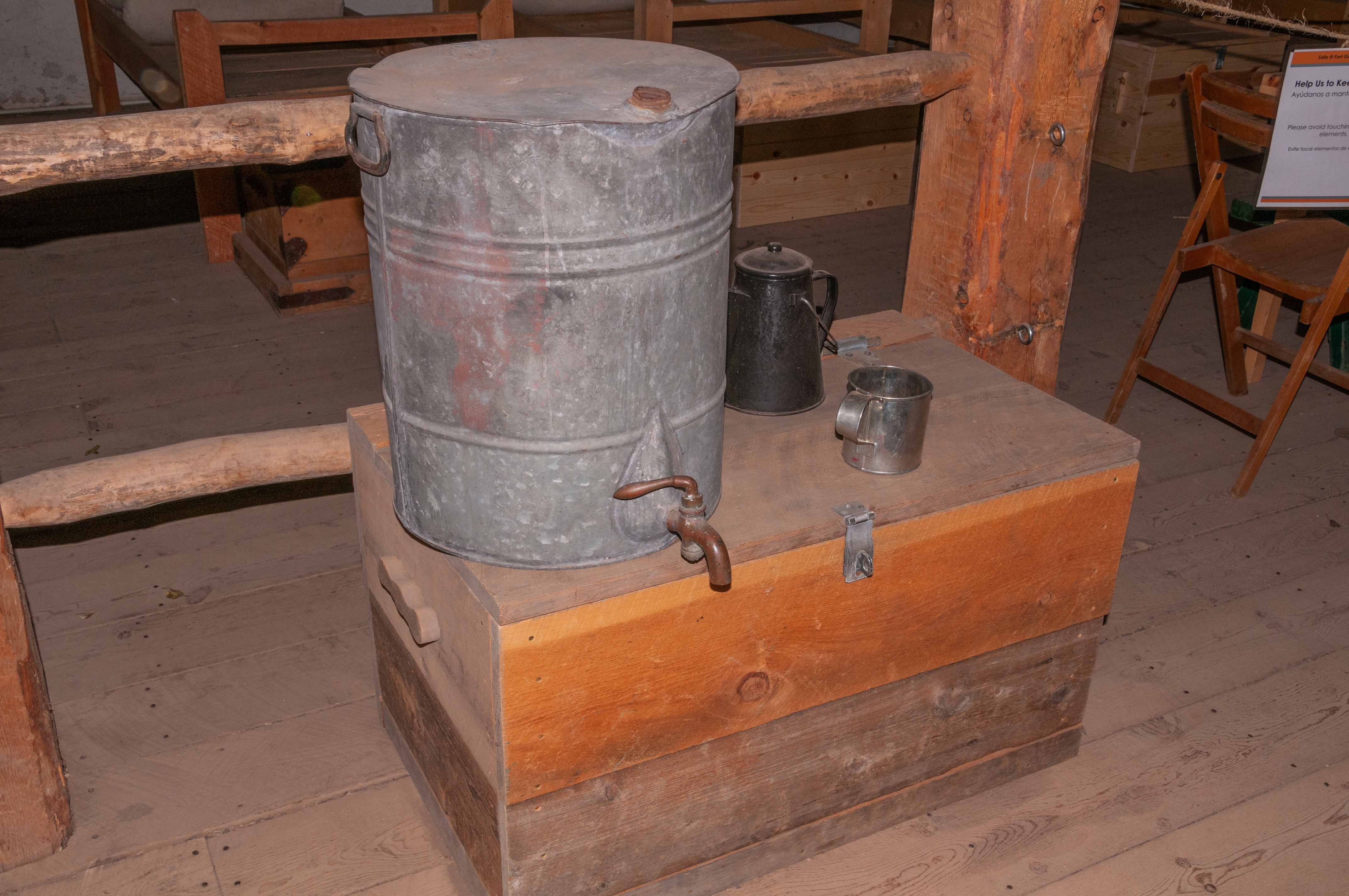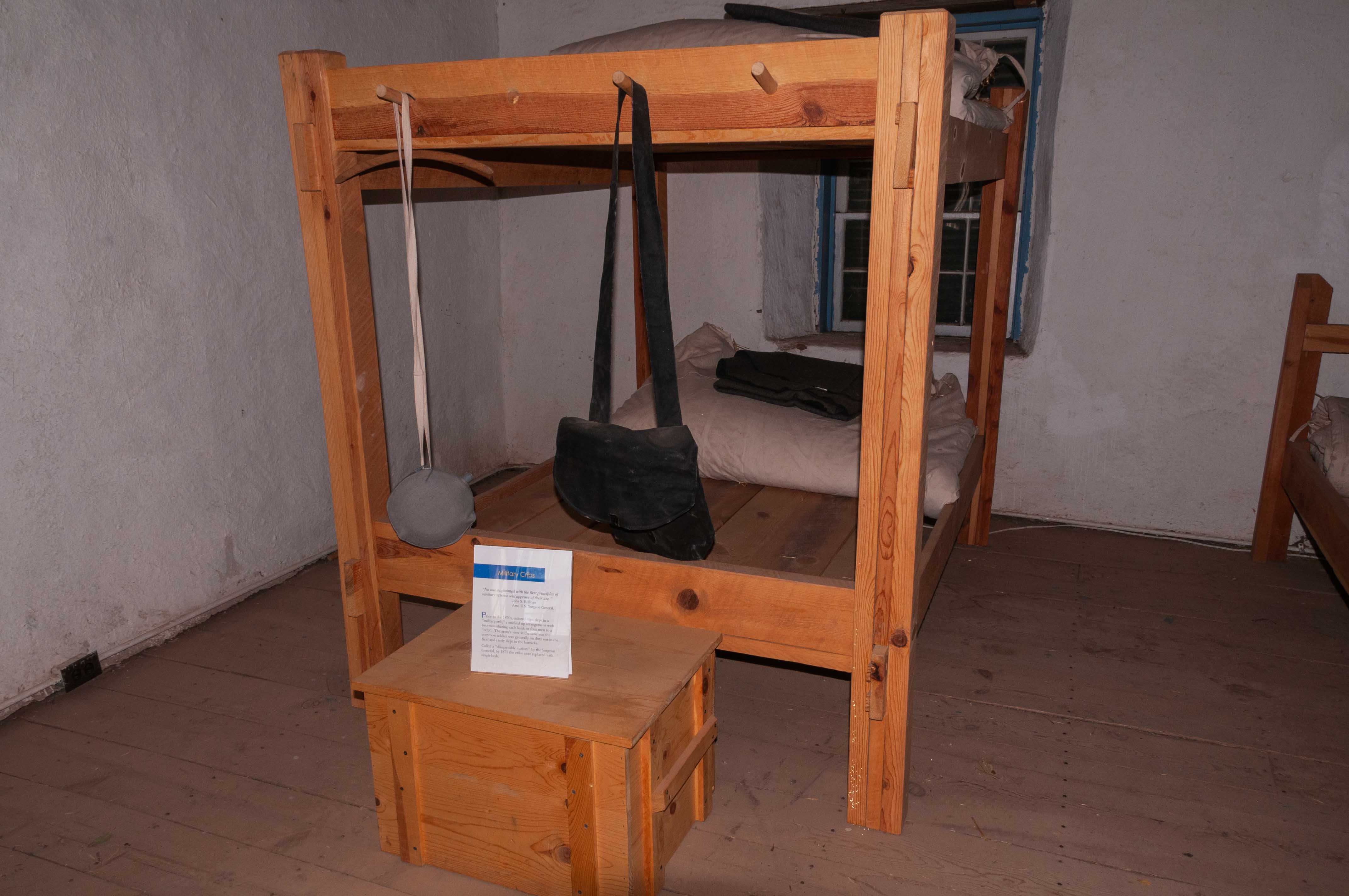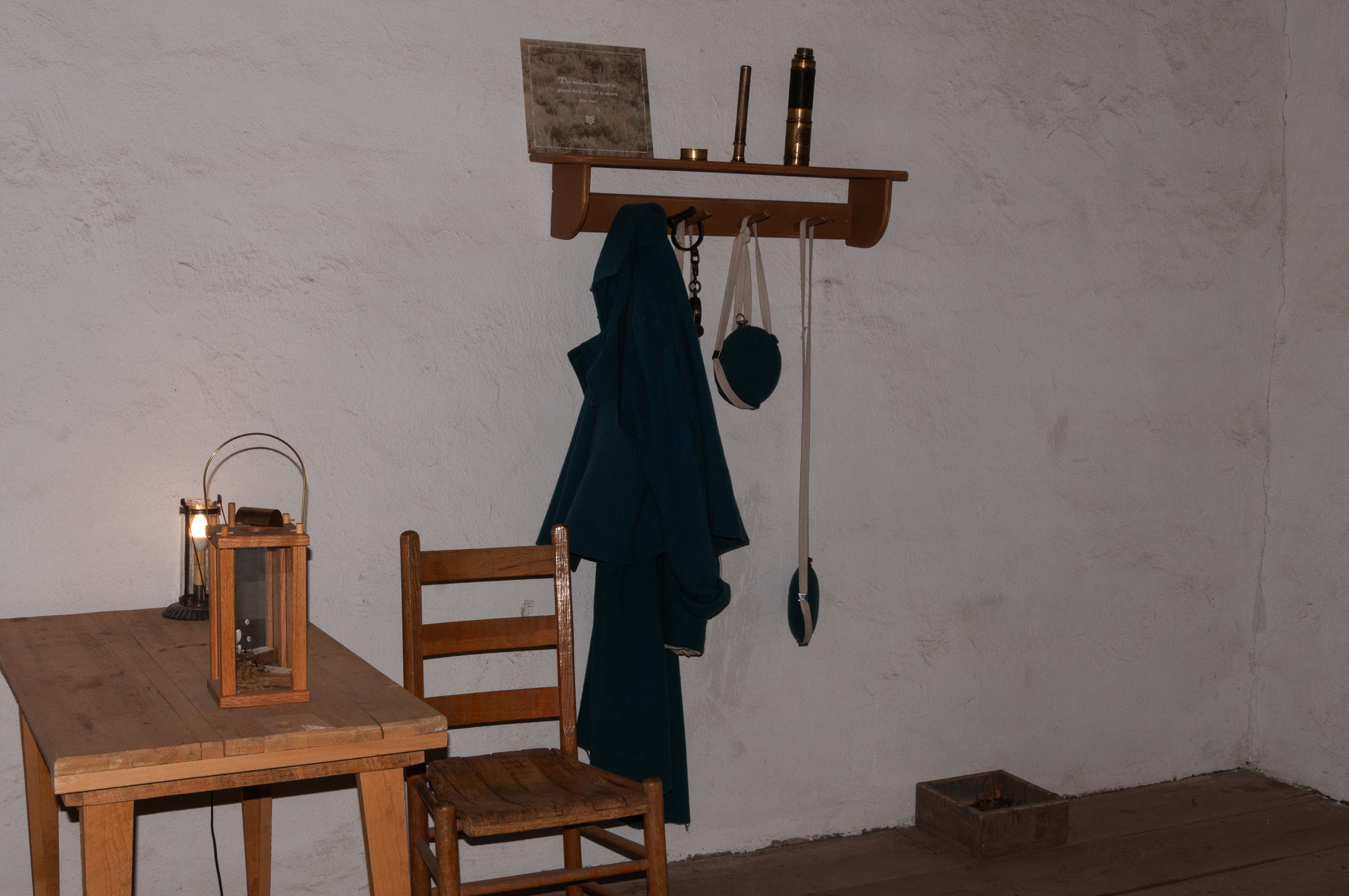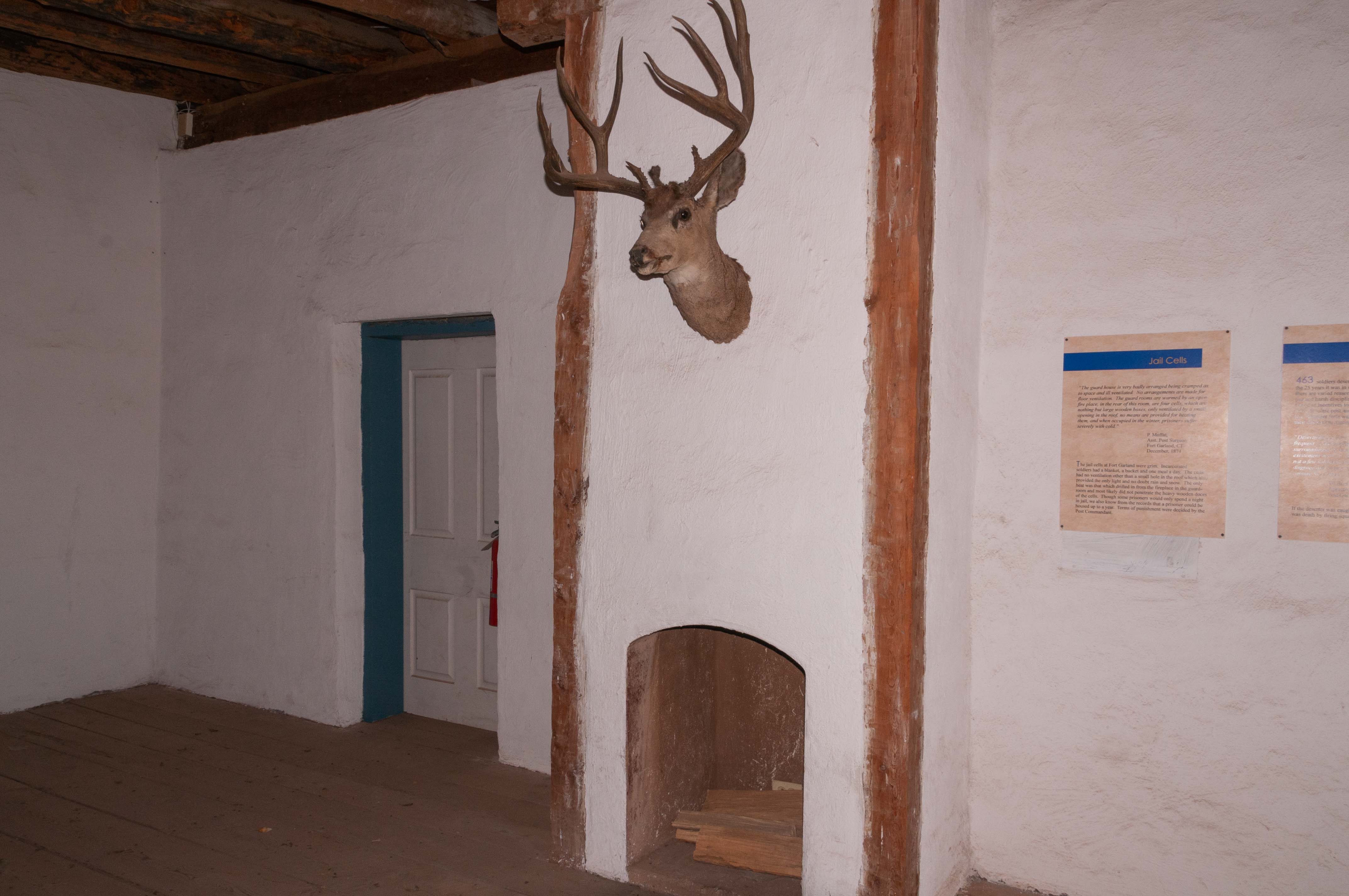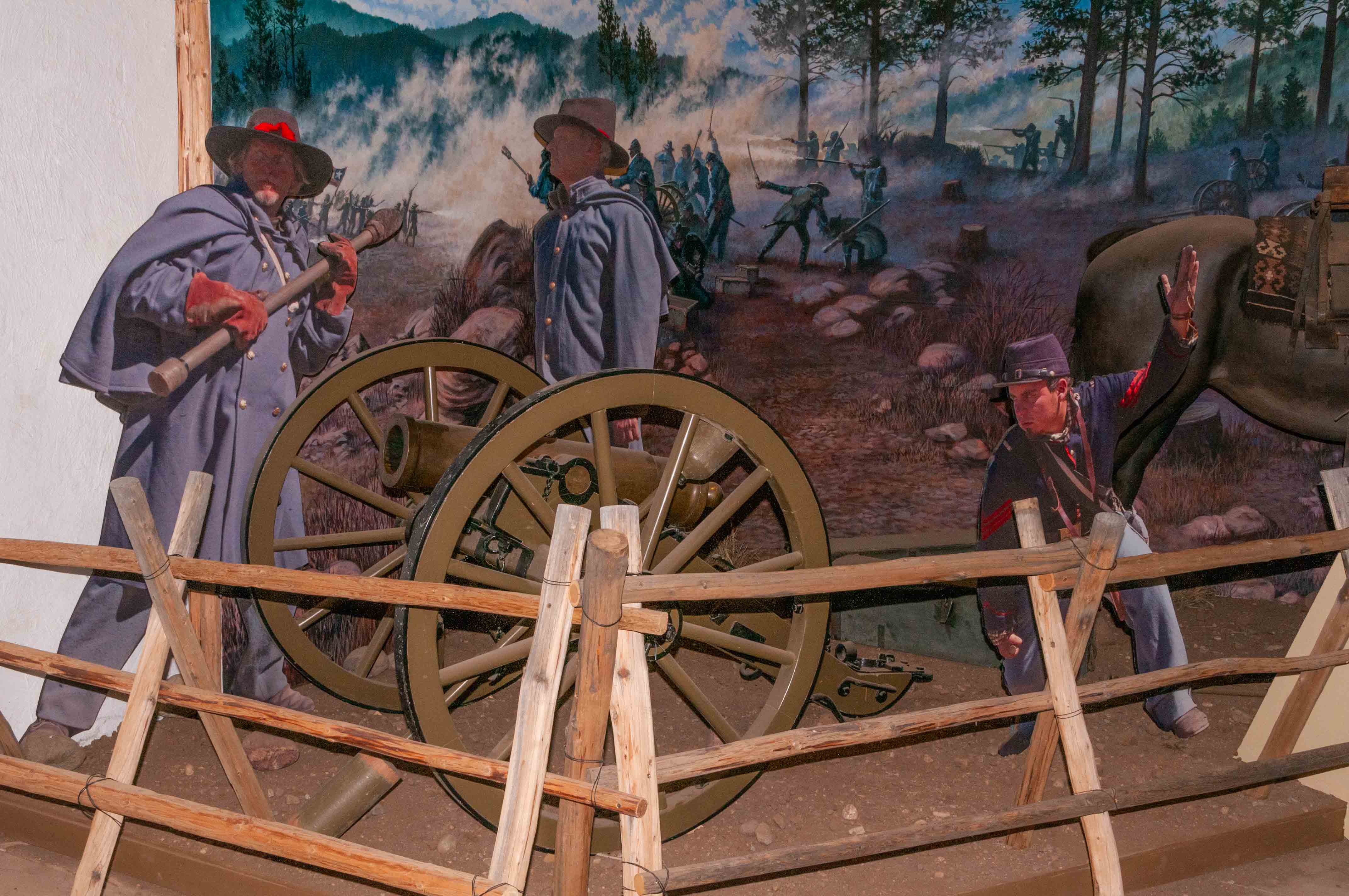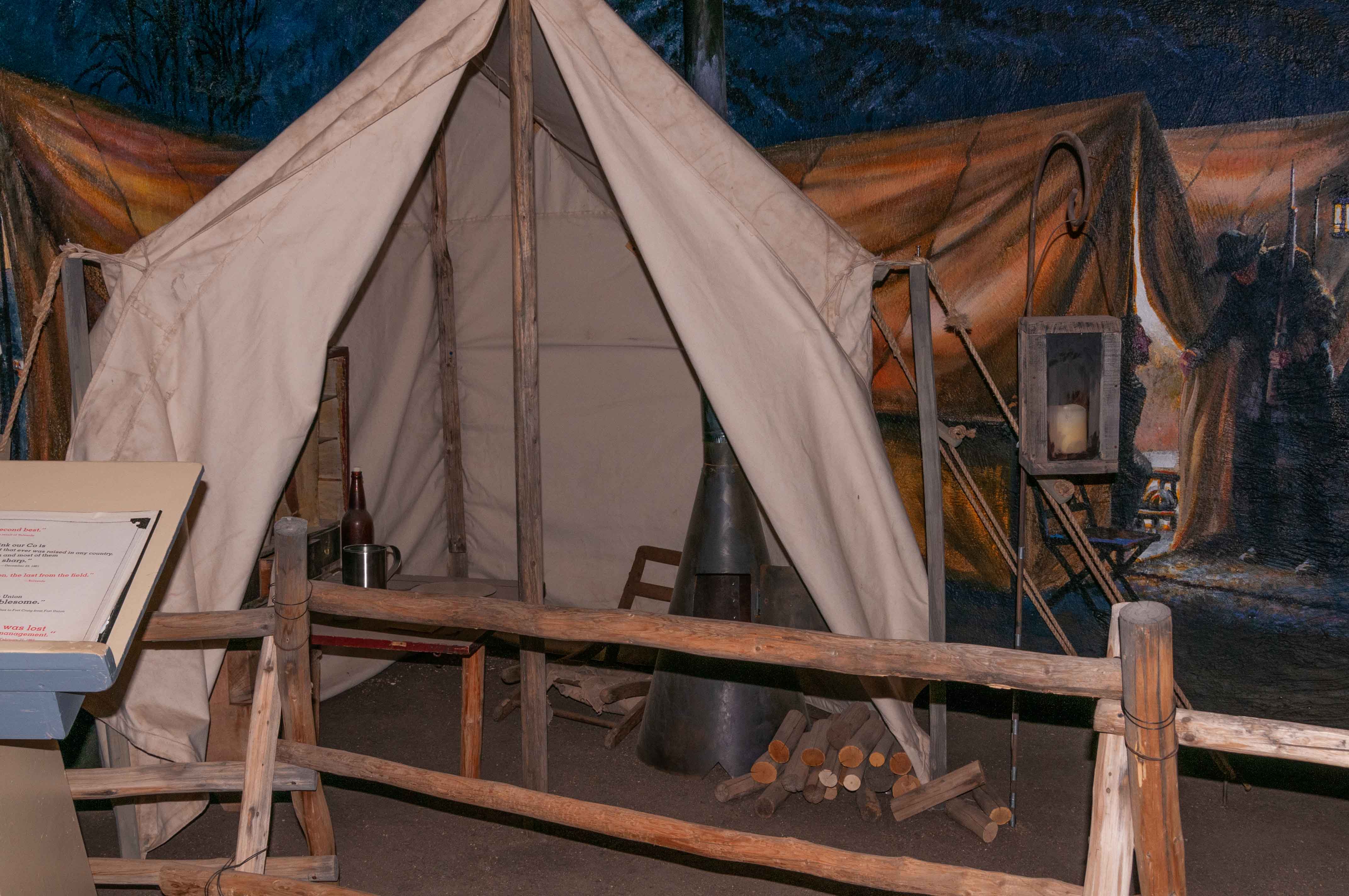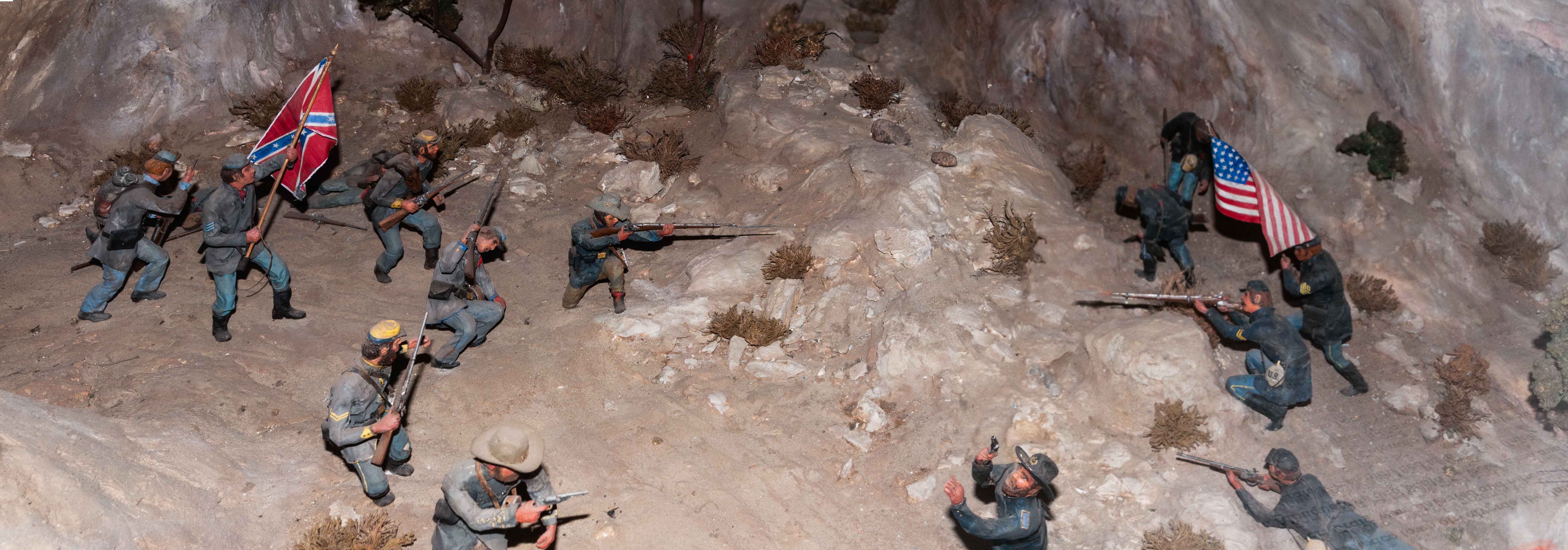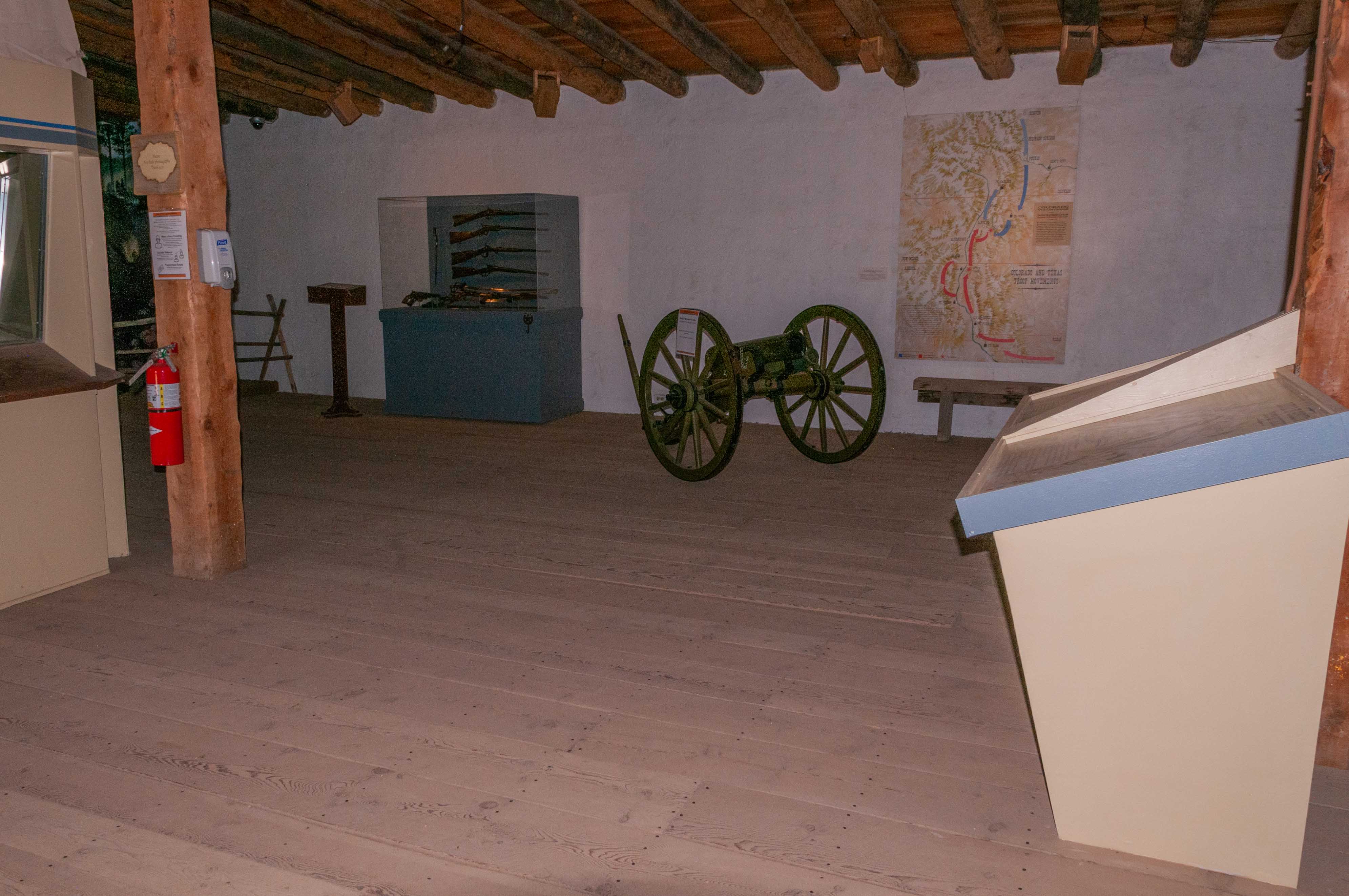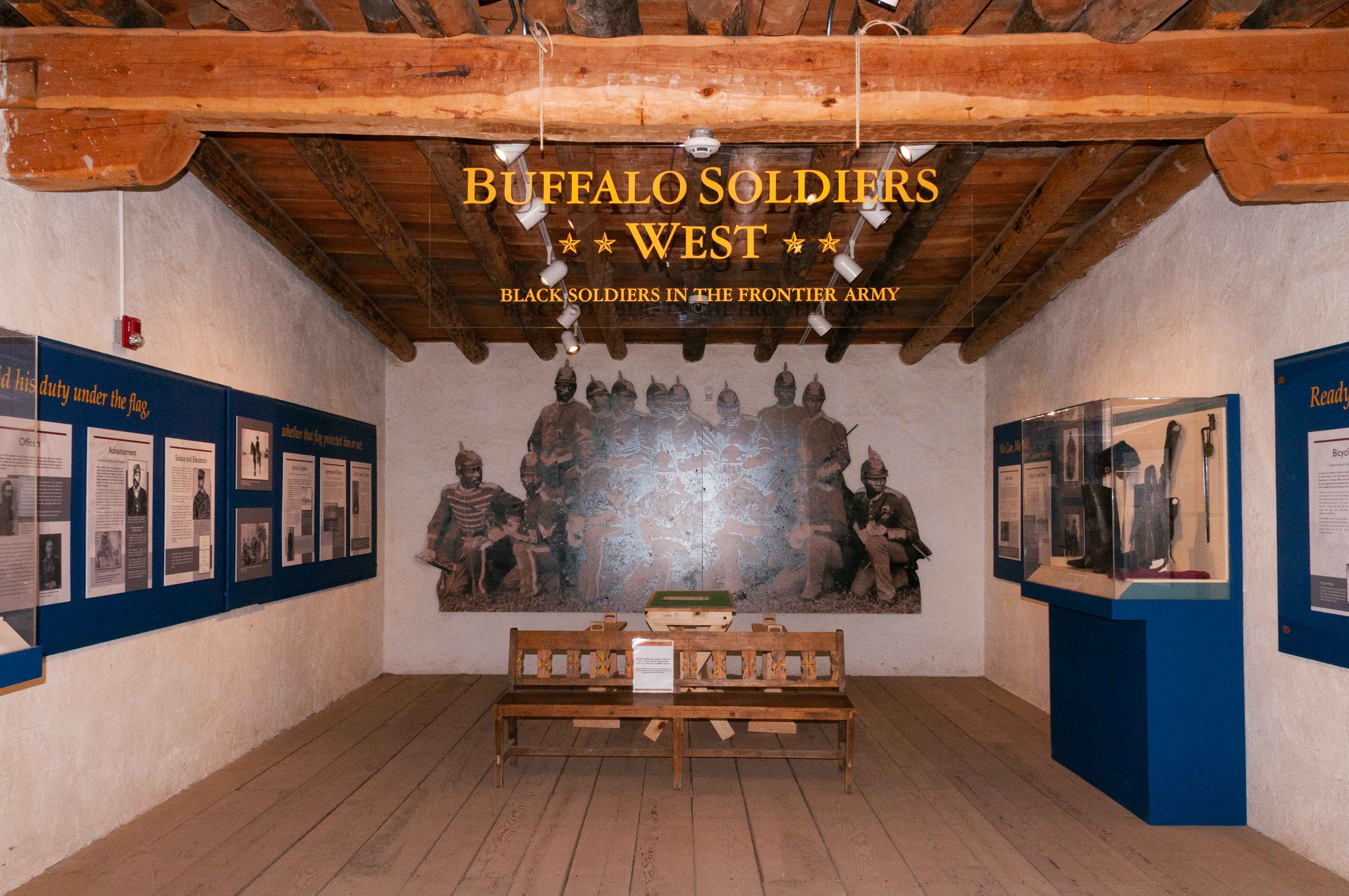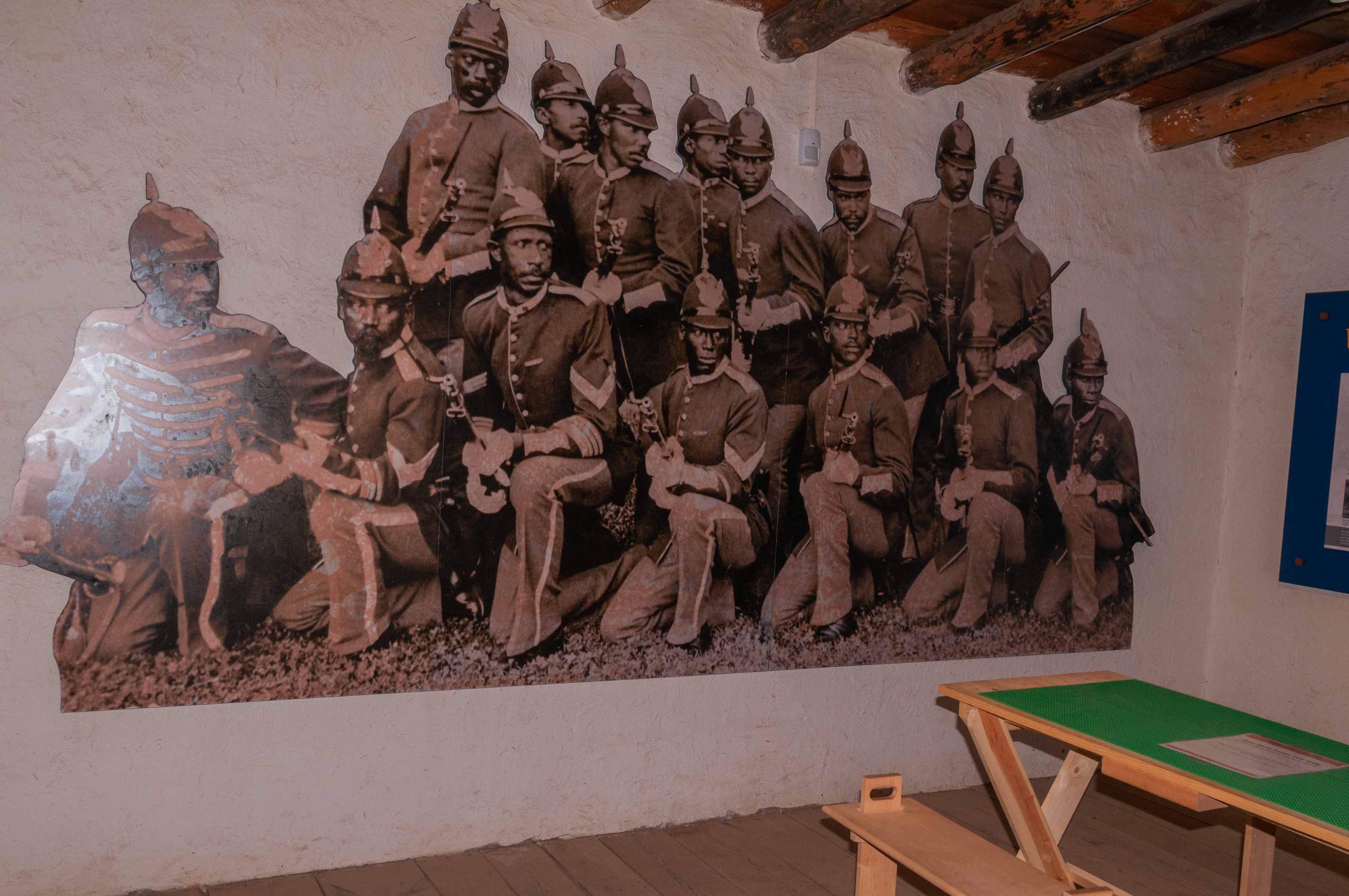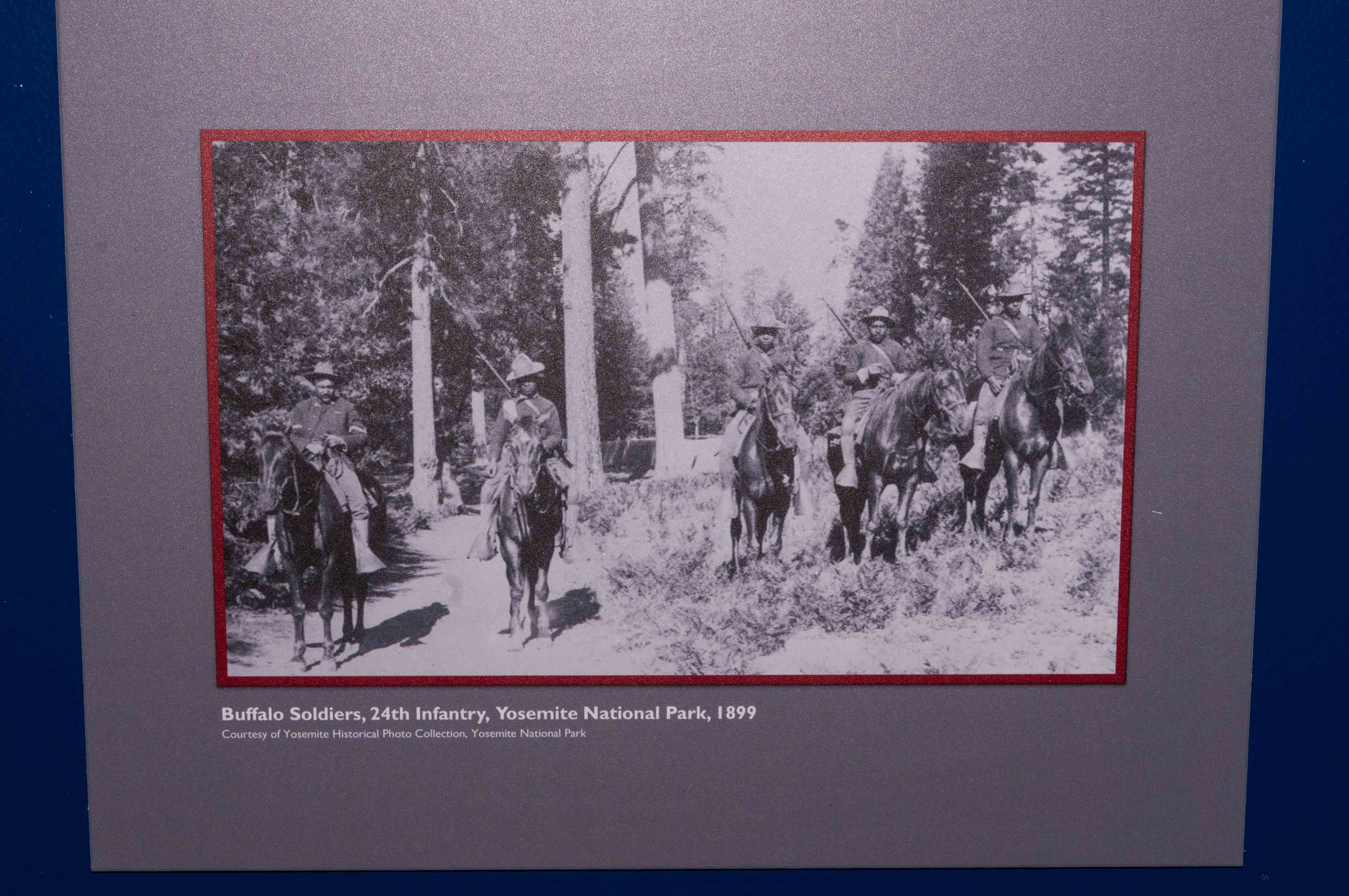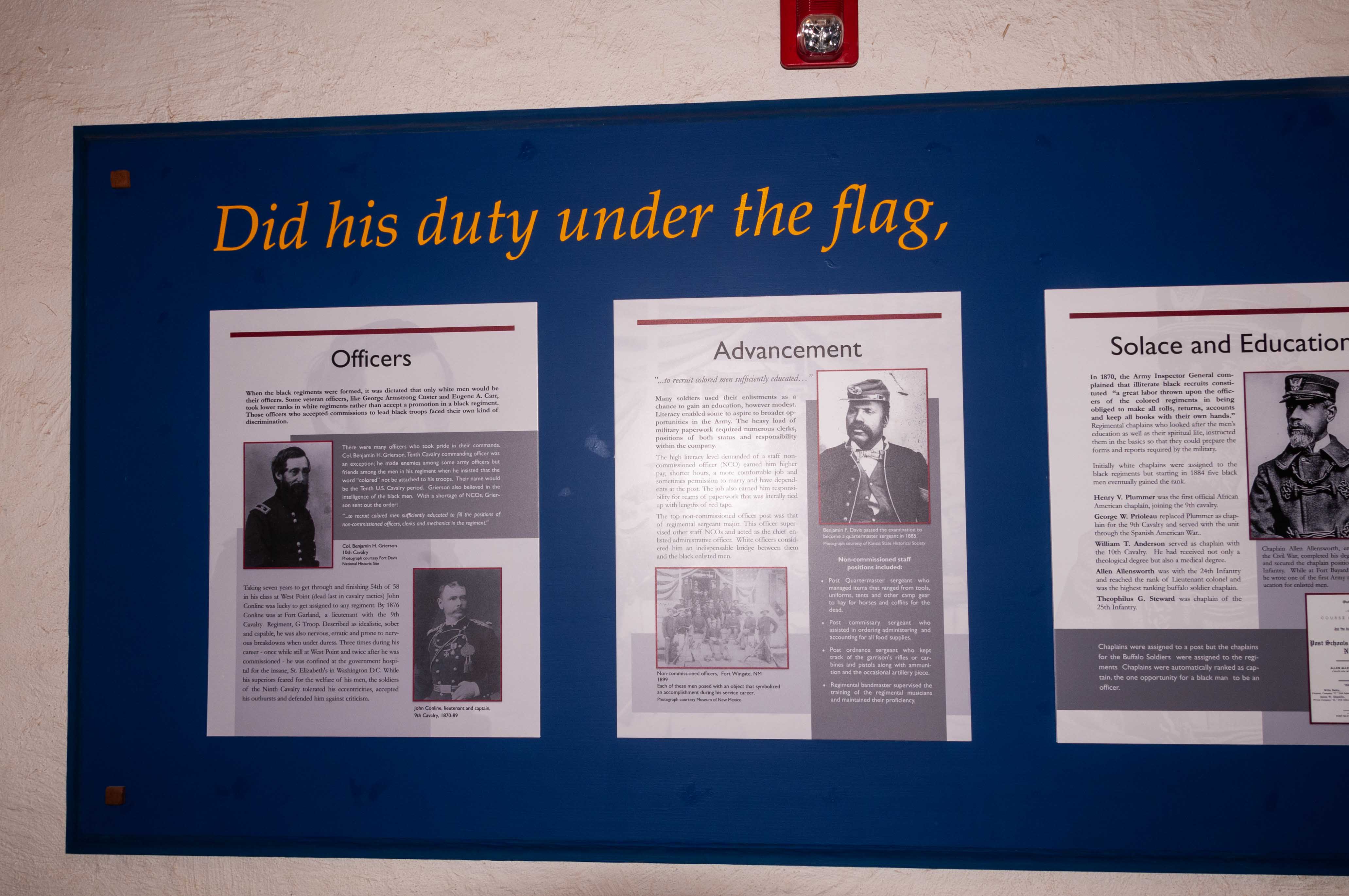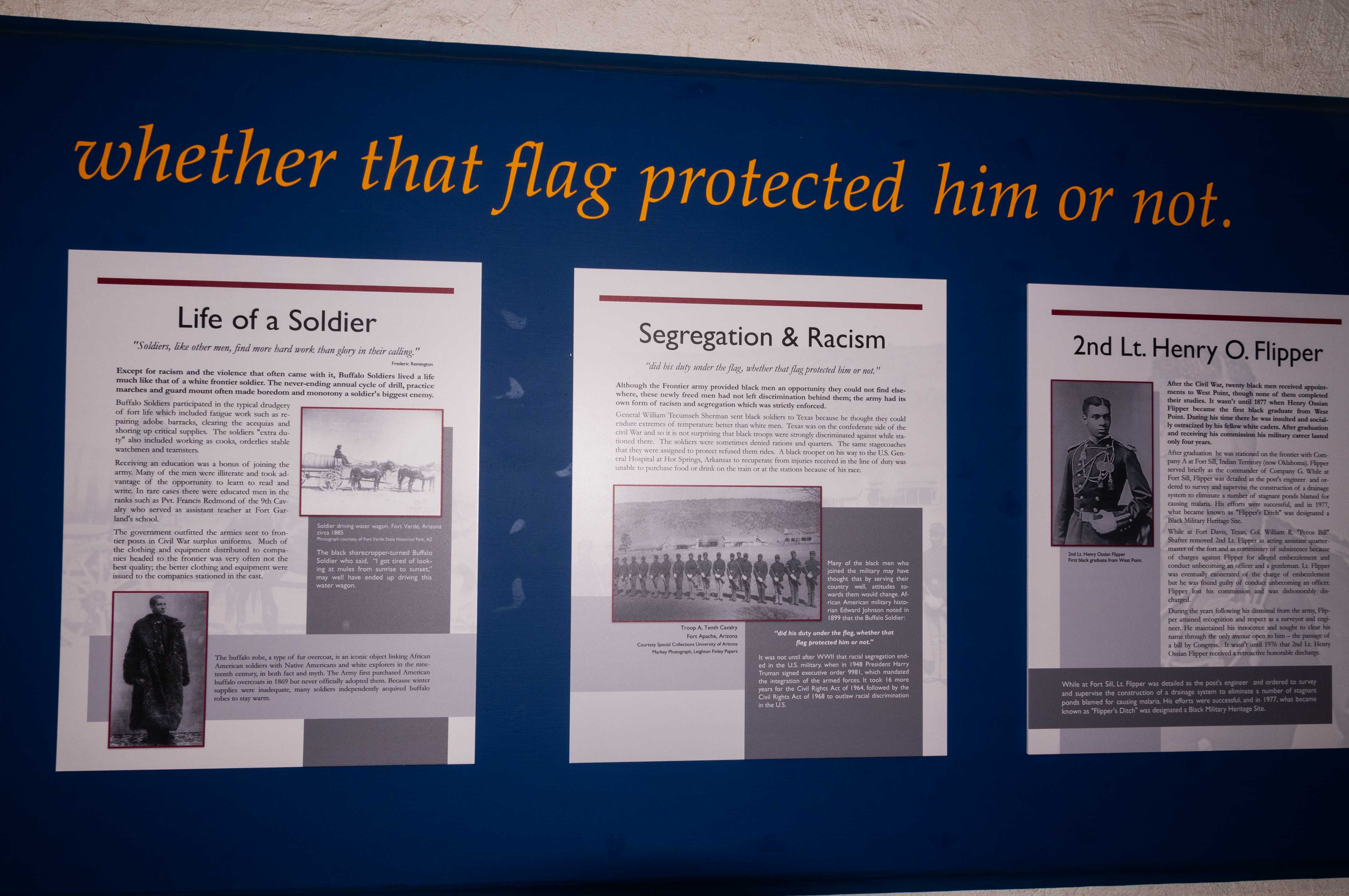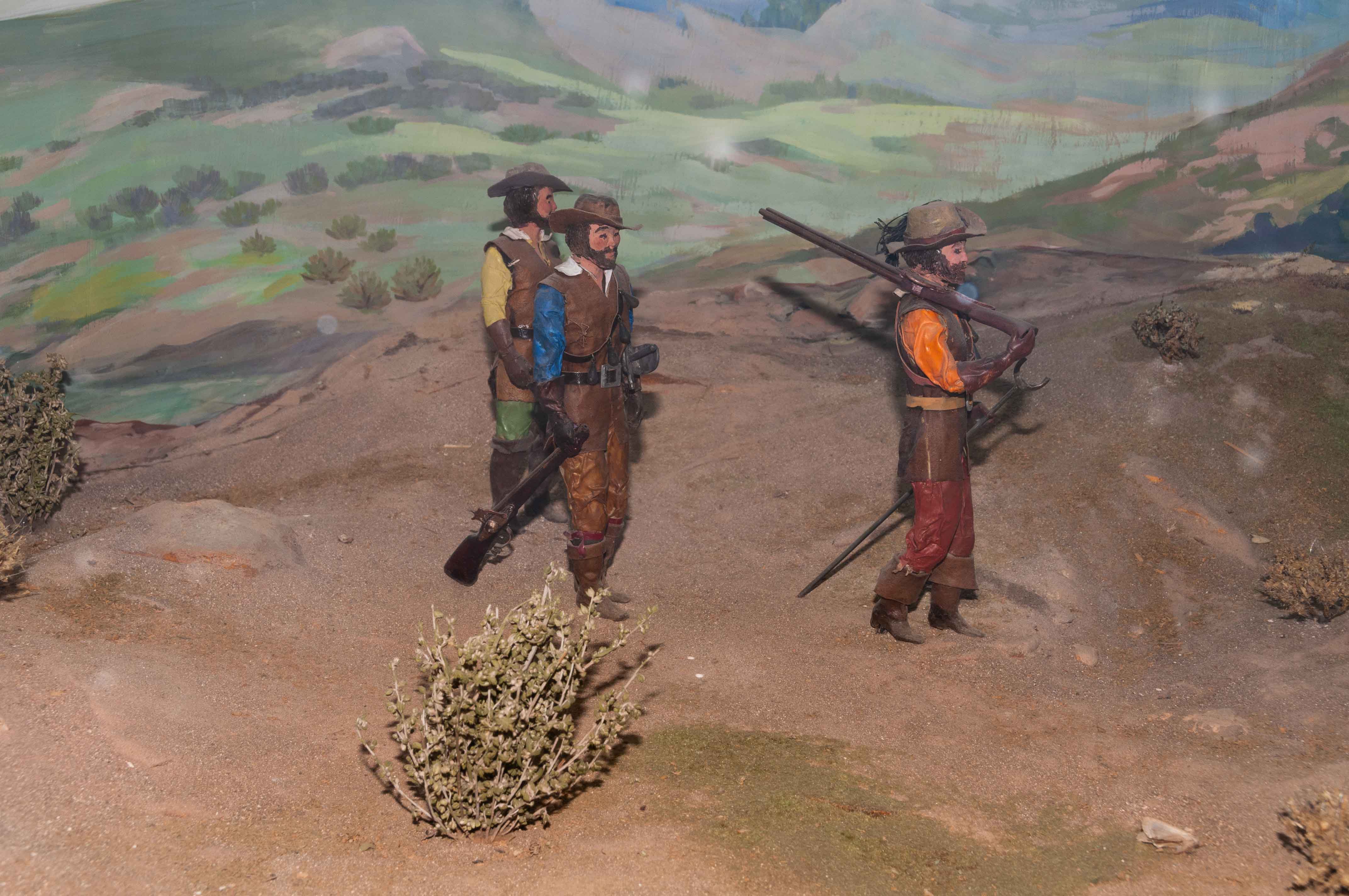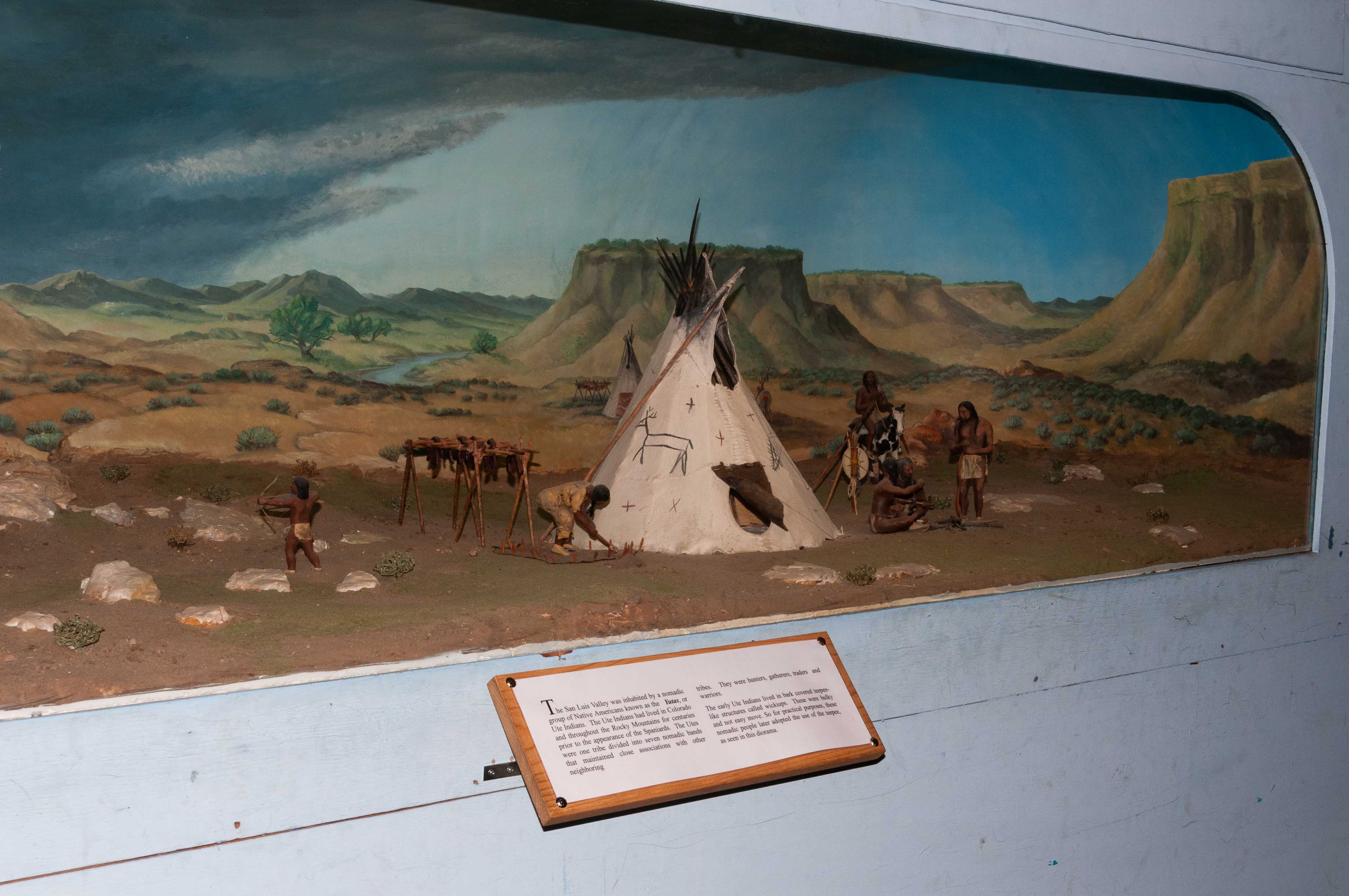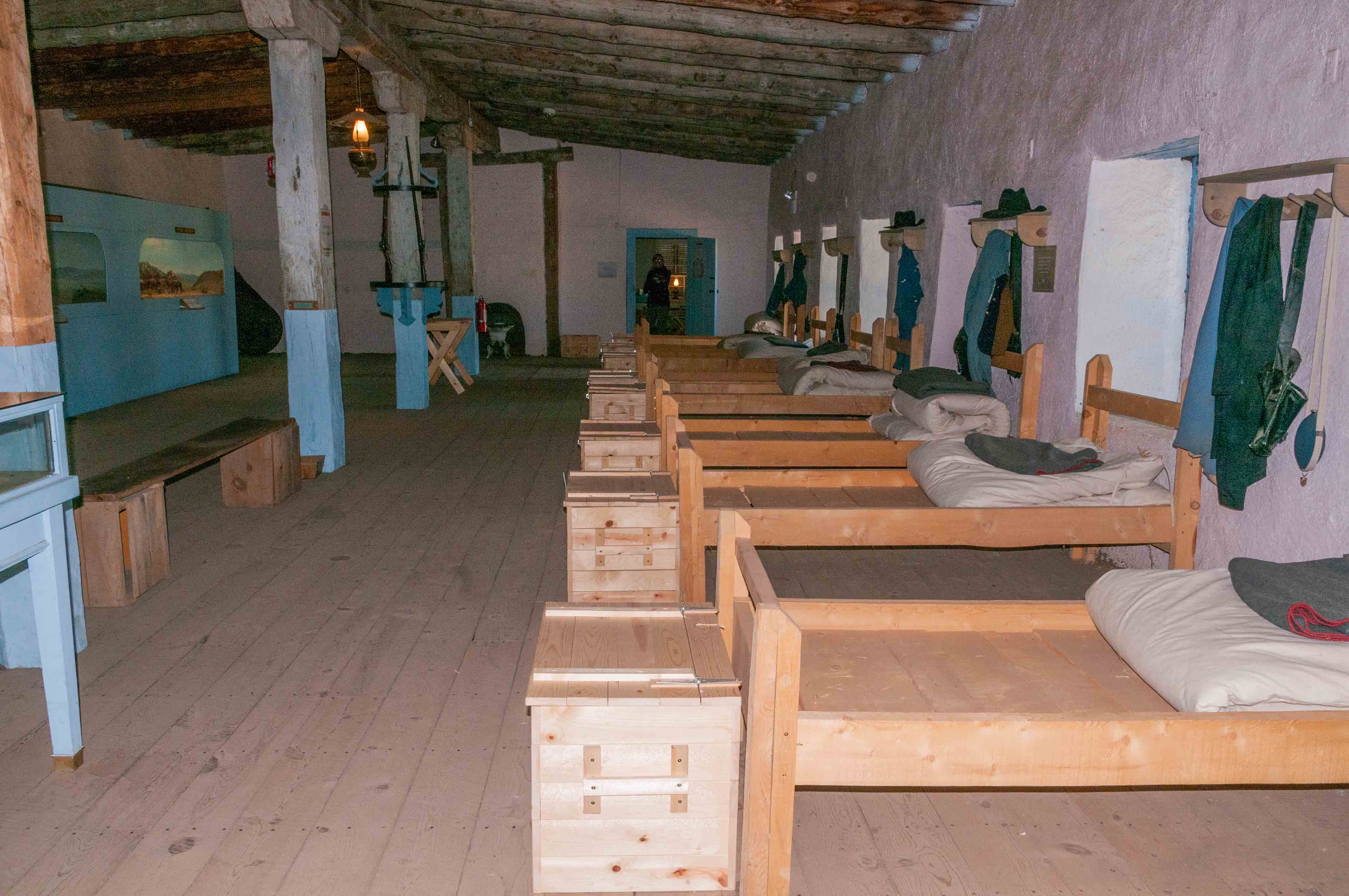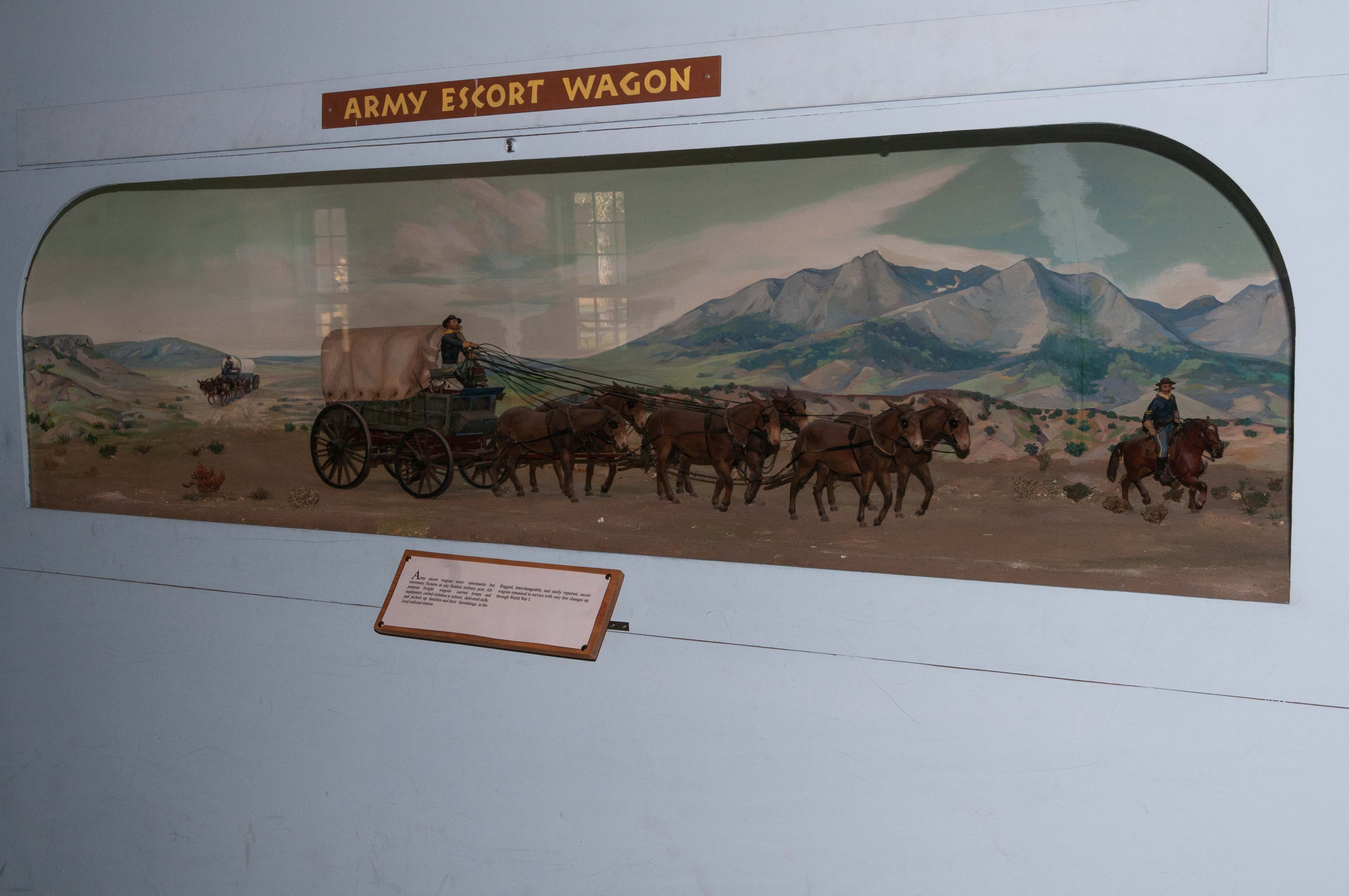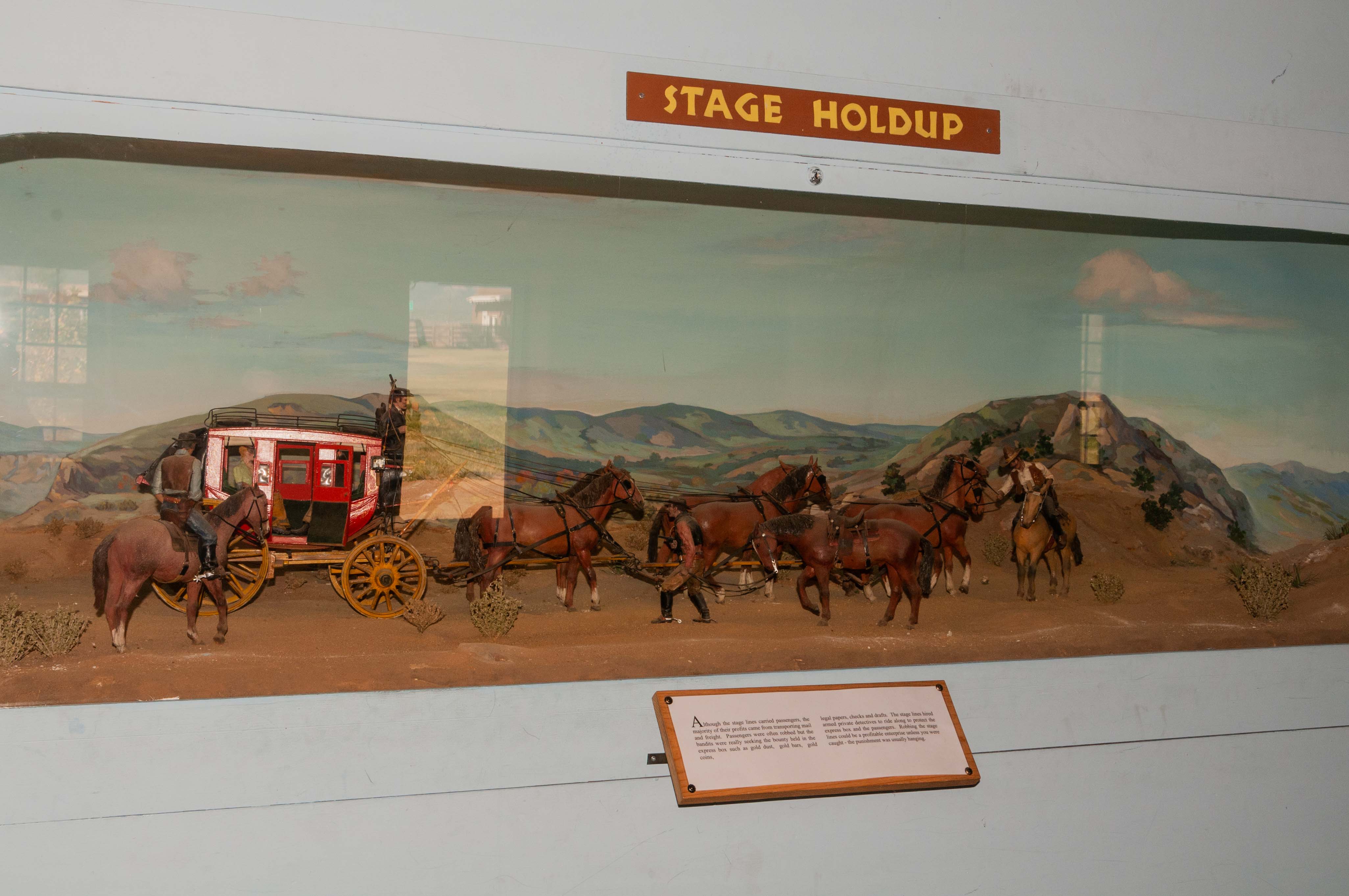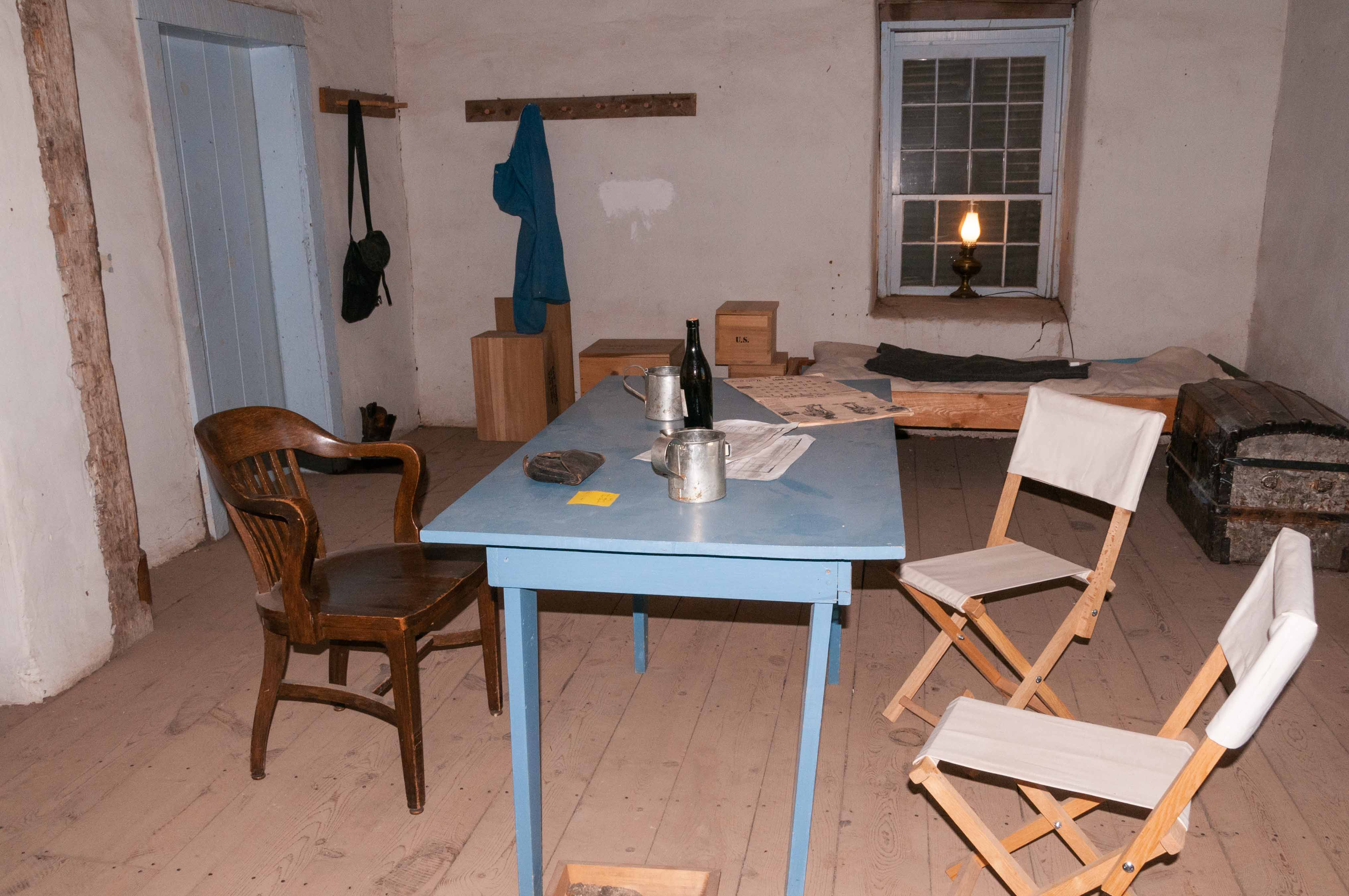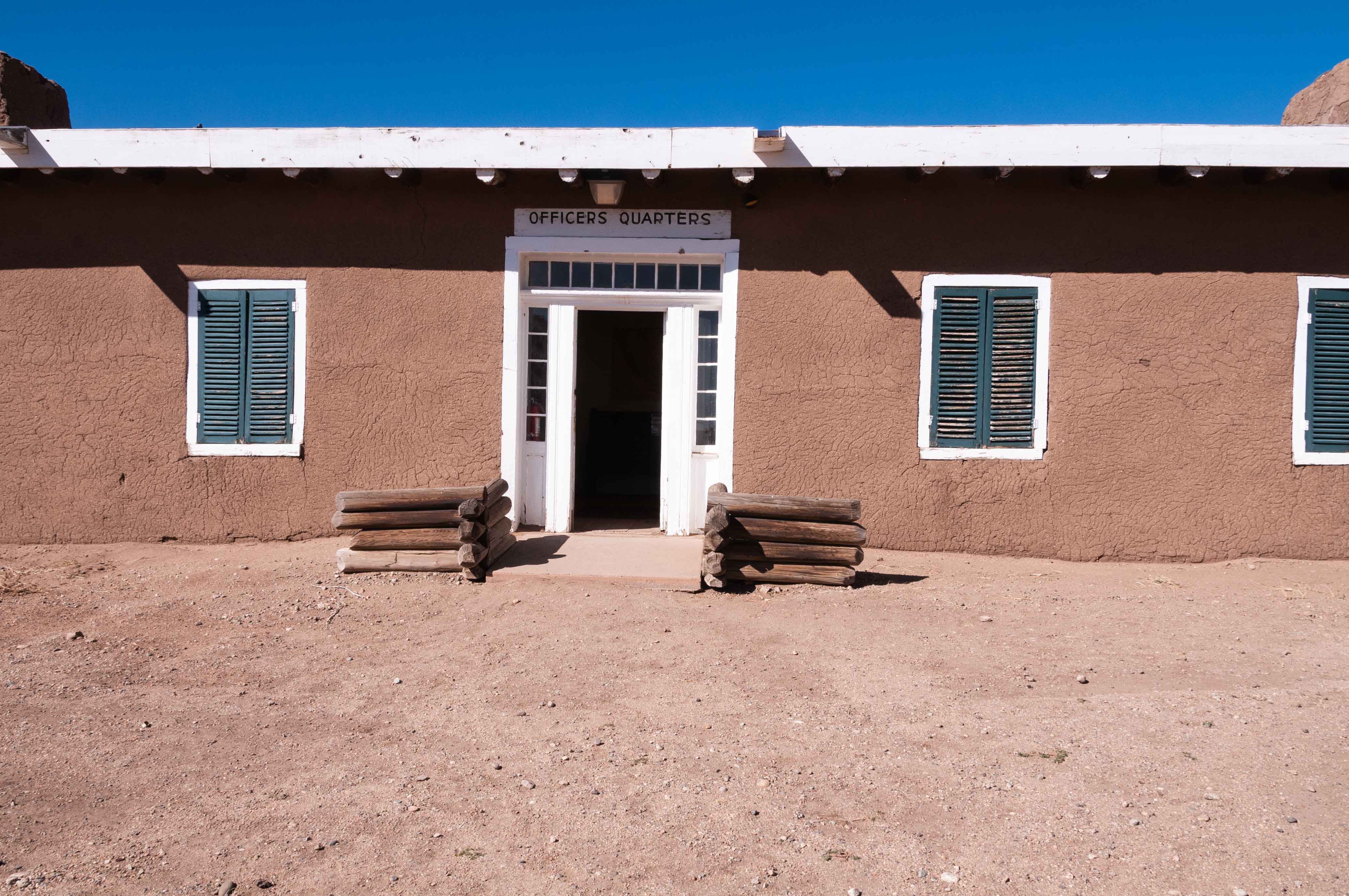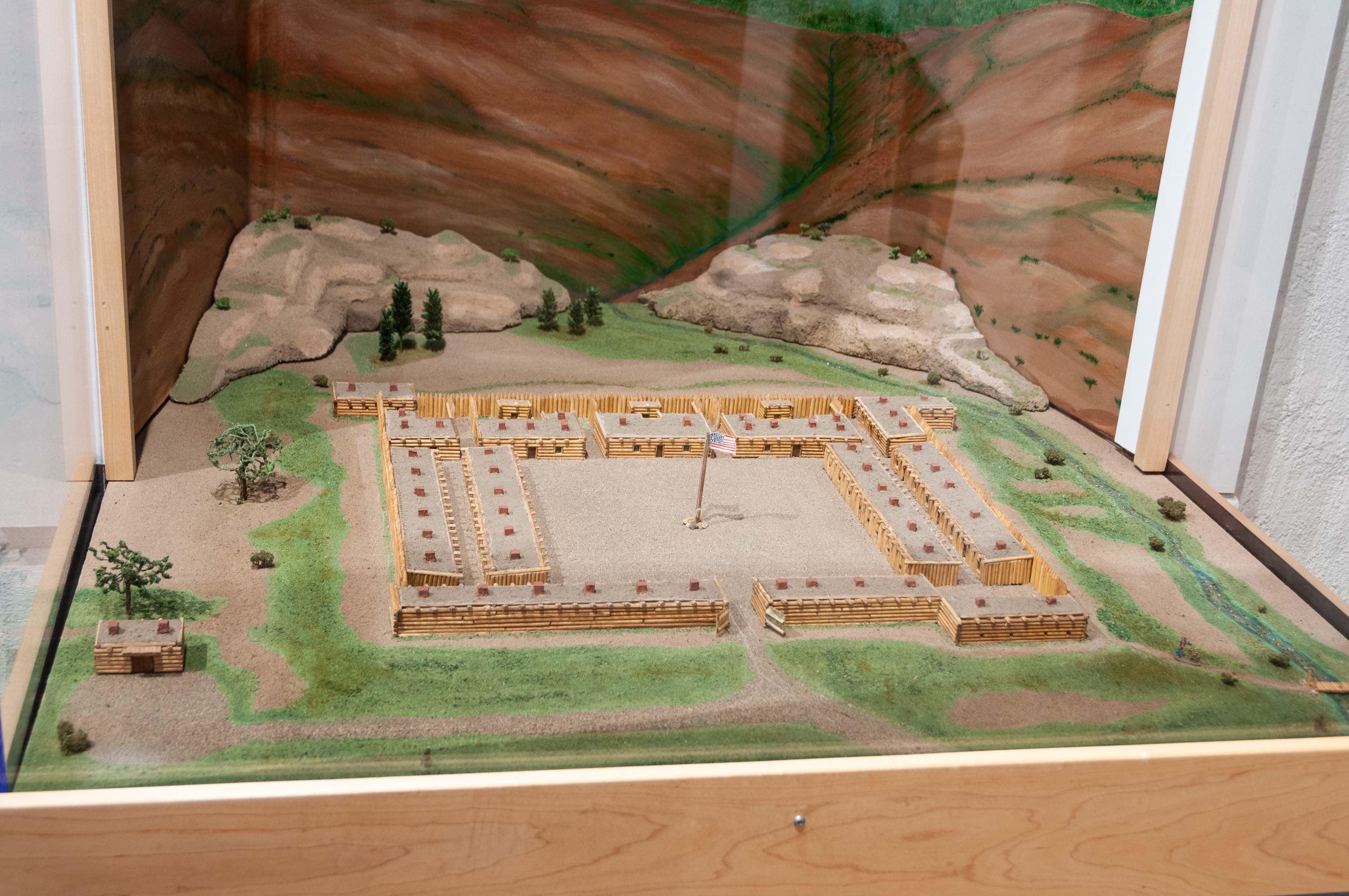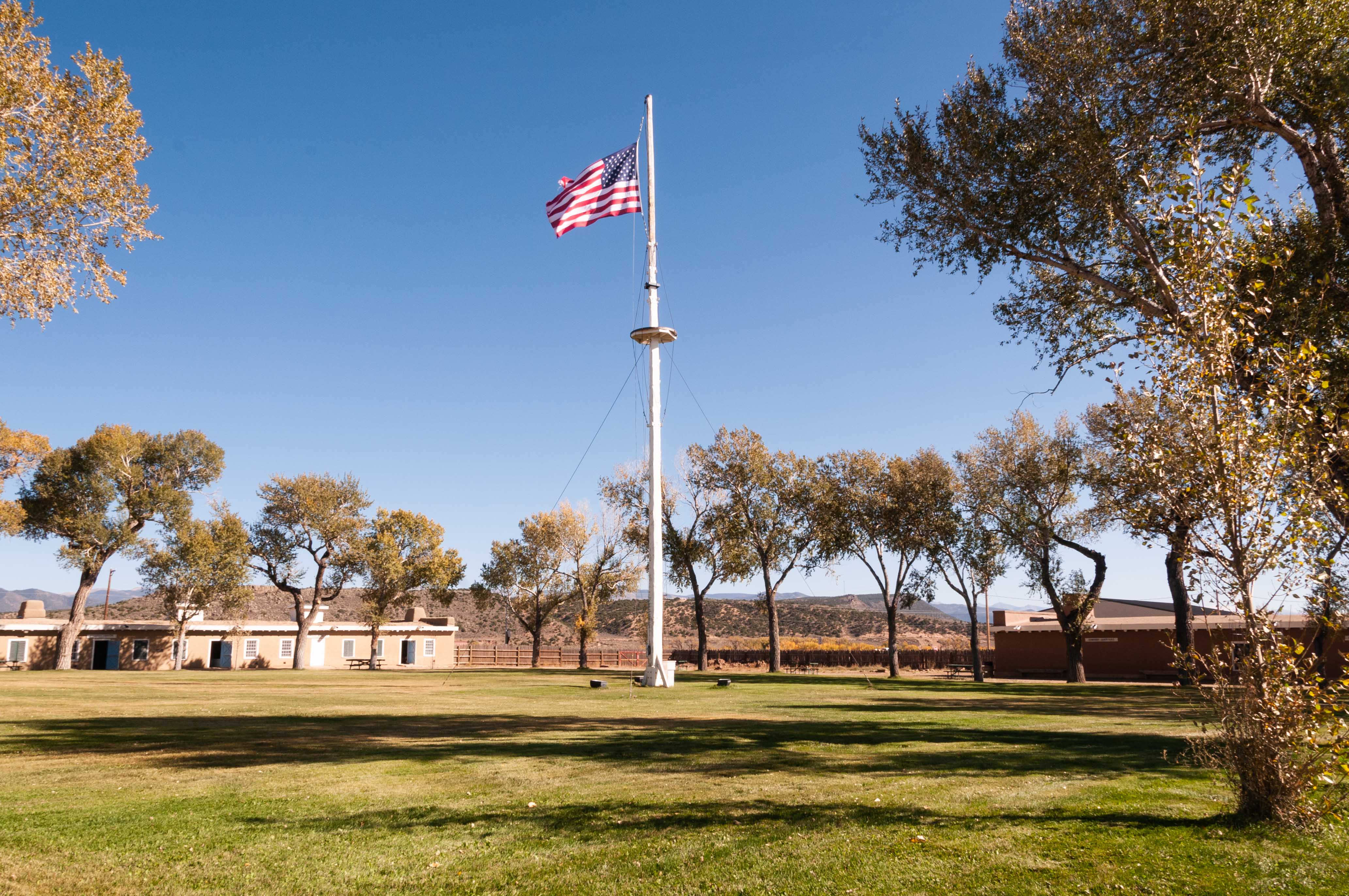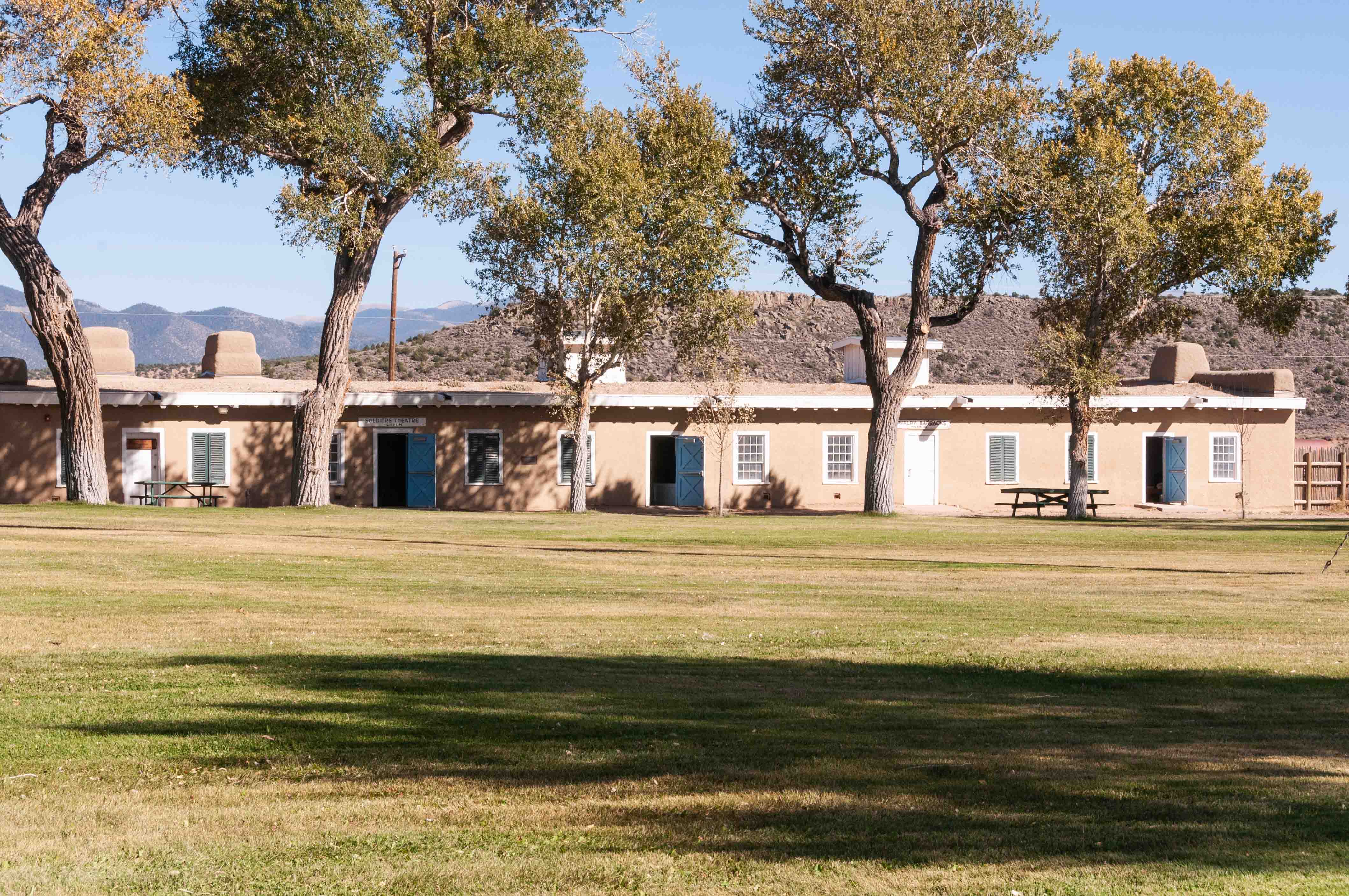Historic Fort Garland
Fort Garland is a restored Union fort located in the town of Fort Garland in south-central Colorado.
Fort Garland, which opened in June 1858, consisted of adobe buildings built in a square around a central parade ground.
There were quarters for nine officers on the north side of the parade ground, a barracks for a company of
cavalry on the east and a barracks for a company of infantry on the west.
Two long buildings on the south side of the parade ground included administrative offices and store rooms.
Additional buildings included a hospital, sutler's store, and stables.
With the advent of the Civil War in 1861 the companies of the 10th Infantry stationed at Fort Garland moved
to Fort Craig, New Mexico Territory, and the fort served as an enlistment and assembly center for Colorado volunteeers.
In 1862 two companies of Colorado Volunteer Infantry left Fort Garland to join Union troops in the Battle
of Glorieta Pass against Confederate Texans. In 1866, Colonel Christopher “Kit” Carson and troops from
the 1st New Mexico Infantry and Cavalry Battalion garrisoned Fort Garland. Carson was instrumental in keeping peace
between settlers and local Ute Indians in the San Luis Valley. Carson and the New Mexico Volunteers were replaced
by Regular Army troops in November of 1867. The Ninth Cavalry (Buffalo Soldiers) was stationed at the fort between 1876 and
1879 and were instrumental in keeping peace between the Utes and white settlers. In 1879 peace with the Utes ended
abruptly when angry Utes killed Indian Agent Natan Meeker and 8 others (refer to the White River Museum photoessay). Fort Garland
served as a base of operations during the Ute Wars that ended in 1880 when the Utes were forced onto reservations.
The Army abandoned Fort Garland in November 1883.
The Colorado Historical Society restored the fort and opened the Fort Garland Museum in 1950 which is currently
operated by History Colorado as one of its regional museums.
Cavalry Barracks
Cavalry and infantry units had separate barracks, kitchens, and latrines. The "Soldiers Theater"
picured below was most likely really a barracks. The military crib was a bunk bed sleeping two
men to a bunk (4 men per crib). This practice was stopped by the surgeon general in 1875 and
the crib replaced with single beds.
Guard House
The Guard House was situated next to the original sally port (main
entrance) of the fort. This guard house was heated by a single
fireplace in the main room. Soldiers served 24 hours shifts on guard duty.
The Guard House also contained 3 prison cells. Each prisoner was given a
blanket, daily meal, chamber pot, and apparently nothing else.
Civil War in the West
The Civil War in the West consisted of one incursion by Confederate Texas cavalry
and several companies of Arizona militia into New Mexico Teritory in 1862. The first
engagement between Union and Confederate forces occured at Valverde ford on the Rio Grande
near Fort Craig. Soldiers of the 10th Infantry sent to Fort Craig from Fort Garland participated
in this battle. The Battle of Valverde was a victory for the Confederates, who continued north
to capture the capital of Santa Fe. Union forces met the Confederates at Glorieta Pass southeast
of Santa Fe for the second and final engagement of the New Mexico Campaign, the Battle of Glorieta Pass.
This was a decisive Union victory that ended the New Mexico Campaign, with the Confederates retreating
back to Texas. Several companies of Colorado Volunteer Infantry from Fort Garland played a significant
role in the battle.
Buffalo Soldiers
The Ninth Cavalry, a unit of African Americans known as Buffalo Soldiers,
was stationed at Fort Garland from 1876 to 1879 (refer to Oklahoma Fort Reno photoessay).
These soldiers were tasked with keeping peace between the Utes and white settlers
and prospectors, and saw significant action during the Ute War.
Infantry Barracks
Fort Garland could accommodate two infantry companies of 100 men each. The enlisted
men lived in the barracks and sergeants occupied small adjoining rooms. The barracks
contain many artifacts and dioramas depicting various subjects from the middle to late 1800s.
Officers Quarters
The Officers Quarters lined the north side of the fort. Officers quarters were
very upscale compared to the soldiers barracks. Officers could bring their families
to the fort, and the commandant had his own private house. The Officers Quarters
currently house museum offices, gift shop, bookstore, and exhibits on contruction
techniques, conservation and restoration efforts, Kit Carson, and other subjects.
Background information obatined from Fort Garland Museum brochures, Wikipedia, historycolorado.org, and armyhistory.org
Use the form on the Home Page to submit comments, questions, or suggestions. TD Productions Copyright © 2020

